FREE SHIPPING Over $79!
- RX Requirements
- Submit Your RX
- Shipping & Policies

Most Popular
- Health & Wellness CPAP Filters Tubing Accessories Enteral Feeding Pumps Feeding Supplies Nutritional Products Dysphasia Exam & Diagnostic Supplies Exam Gloves Vital Signs Monitoring Health Monitors Blood Pressure Monitors Fitness & Exercise Incontinence Products Briefs Liners Pants Pads Incontinence Hygiene Infusion IV Therapy Syringes Needles Syringes and Needles Collection Sets Extension Sets Mens Health and ED E.D. Pumps Tension Rings Accessories Nursing Supplies Patient Care Durable Medical Equipment Patient Hygiene Pharmacy OTC Products Physical Therapy Braces Hot & Cold Therapy PTS Professional Products A1C Testing Products CardioChek Products Respiratory Adapters/Connectors/Tubing Nebulizers Tracheostomy Miscellaneous Tens Electrodes Accessories Urology Catheters Drainage Wound Care Dressings Gels & Liquids Tapes Wraps Bandages Pads, Swabs, & Wipes Instruments
- Shop By Brand
- Shop By Meter
- Shop By Gauge
- Shop FSA Eligible
- Subscribe & Save
- Customer Reviews
FREE shipping on orders over $79!

- Glucose Test Strips
- Insulin Syringes
- Pen Needles
- Diabetes Care
- Lancets & Lancing Devices
- Glucose Meter Kits
- Diabetes Accessories
- Adhesive Tape
- Glucose Control Solution
- Glucose Log Books
- Insulin Coolers & Travel
- Fast Acting Glucose
- Diabetic Snacks
- Diabetic Skin Care
- Diabetes T-Shirts
- Diabetic Foot Care
- Compression Stockings
- Diabetic Shoes
- Diabetic Socks
- Insulin Pump Supplies
- Infusion Sets
- Cartridges/Reservoirs
- Insulin Pumps
- Insulin Pump Cases
- Insulin Pump Accessories
- Diabetic Pet Care
- Pet Diabetes Meters
- Pet Test Strips
- Vet Syringes
- Vet Pen Needles
- Pet Care Accessories
- Health & Wellness
- Accessories
- Feeding Pumps
- Feeding Supplies
- Nutritional Products
- Exam & Diagnostic Supplies
- Exam Gloves
- Vital Signs Monitoring
- Health Monitors
- Blood Pressure Monitors
- Fitness & Exercise
- Incontinence Products
- Incontinence Hygiene
- Syringes and Needles
- Collection Sets
- Extension Sets
- Mens Health and ED
- Tension Rings
- Nursing Supplies Patient Care
- Durable Medical Equipment
- Patient Hygiene
- OTC Products
- Physical Therapy
- Hot & Cold Therapy
- PTS Professional Products
- A1C Testing Products
- CardioChek Products
- Respiratory
- Adapters/Connectors/Tubing
- Tracheostomy
- Miscellaneous
- Gels & Liquids
- Pads, Swabs, & Wipes
- Instruments
- Ways to Shop
- Subscribe & Save
Insulin Coolers
12 products
- Best selling
- Alphabetically, A-Z
- Alphabetically, Z-A
- Price, low to high
- Price, high to low
- Date, old to new
- Date, new to old
- Diabetic Accessories (12)
- MediCool (5)
The Necessity of Diabetic Coolers and Insulin Coolers
Insulin, the hormone responsible for transferring glucose from the blood into the body's cells for energy, is the common deficiency in all types of diabetes - from types 1 and 2 diabetes to gestational diabetes (GD). When diabetes cannot be controlled by an oral medication, it may be necessary to move toward insulin injections via syringes , diabetic insulin pen needles or insulin pumps . Shop diabetic insulin coolers and carrying cases below.

However one's insulin is administrated, one thing is certain: this is an extremely sensitive medication that is adversely affected by indoor light, hot and/or cold temperatures and sunlight. To remain viable and effective, it is necessary to refrigerate unopened insulin between 36° and 46° Fahrenheit. Once an insulin vial is opened or punctured, it must be stored in a controlled temperature - typically between 56° and 80° Fahrenheit.
Insulin Travel Kits and Insulin Coolers for Diabetics On-The-Go
Keeping your insulin's temperature safe is a fairly simple, cut-and-dry task when you're at home or at work. For active insulin-dependent diabetics or during times of travel, however, insulin care can sometimes present a challenge. Any exposure to sunlight, extreme high or low temperatures or other fluctuating environmental factors can reduce the efficacy of this essential medication. Care must be taken to protect your insulin from the environment. This is where insulin coolers, insulin cases and diabetic coolers come in handy.
Diabetes and your dependence on insulin injections do not need to slow you down one bit. With the technological advances in insulin coolers, insulin travel kits and diabetic coolers, it is easier than ever to keep your insulin safe. Today's insulin coolers and insulin travel cases are specially made to provide safe transport of your injectable medicines, keeping them cool for many hours. This means that you can get to where you're going without worry.
Many Sizes of Insulin Coolers/Diabetic Coolers Available
These insulin coolers and diabetic travel cases are portable and are available in many different sizes and styles - from small, pocket pouches to larger organizer sizes. This allows you to keep your diabetic supplies together, organized and under control. Many of these coolers are discreet: they can be easily tucked inside a purse, a pocket or a backpack.
Although some contain gel pack liners that can be refrozen and reused, some are activated by water, such as the FRIO brand wallets. We also offer MediCool classic organizers, daypacks and Medicool Poucho cases from single-pen sizes to extra-large sizes. These insulin travel kits are made to fit the needs of your lifestyle and offer practical, stylish insulin cooler storage and organization. Choose from a rainbow of available colors, including red, blue, black, purple and green. Our insulin travel cases also come in soft cloth finishes or hard-case options for extra protection for your glass vials, pens and/or syringes.
Unsure of which insulin cooler and insulin travel bag is right for your needs? Contact our knowledgeable, friendly customer service team. Call 877-977-7709 or email us; we are happy to help.
Total Diabetes Supply for All Your Diabetic Supply Needs
At Total Diabetes Supply, we bring you the best of insulin coolers and diabetic/insulin travel cases and organizers. We also carry all other insulin and diabetic supplies, diabetic accessories , insulin pump supplies and self-monitoring items you need to stay in control of your diabetes.
Shop our online store for your everyday diabetes care essentials, such as glucose test strips, diabetic pens and needles, syringes and glucose meters. We are your partner in your journey with diabetes and strive to bring you low-cost products that you can trust. We offer a 100% customer satisfaction guarantee and fast, discreet shipping. Also, when you opt for our Auto-Ship program , you'll save an additional 5% off of our already-low prices on diabetic supplies and everyday must-have items.
We're here to help!
Contact our knowledgeable Customer Service team today
How to get through TSA with these 5 diabetes devices & supplies

Whether you’re traveling for business or pleasure, everyone must pass through security before boarding a flight. But you may be wondering how to properly get your diabetes supplies and devices through the checkpoint, particularly if you wear an insulin pump or a continuous glucose monitor.
The TSA allows for diabetes-related supplies, equipment and medication—including liquids—through the checkpoint once they have been properly screened by X-ray or hand inspection. If possible, pack all your supplies together in your carry-on bag so you have everything on hand. Before your screening begins, inform the officer conducting the screening about any supplies on you or in your carry-on. Here’s how you can fly through TSA with these five common diabetes supplies:
1. Insulin Pump/Continuous Glucose Monitor (CGM)
Taking an insulin pump through airport security is quite common, but it’s always a good idea to carry the Airport Information Card when traveling. You may go through an airport metal detector with your insulin pump and CGM, as these devices are designed to withstand common electromagnetic interference. However, we do not recommend going through an airport body scanner with your pump or CGM, as Medtronic has not determined advanced imaging technology to be safe for insulin pump or CGM devices. Explain to the officer that you cannot remove your infusion set as it is under your skin with tubing and request an alternative pat-down screening process. The same goes for if you’re wearing a CGM. If you do prefer to go through an airport body scanner, be sure to remove your insulin pump and CGM, but do not send your devices through the X-ray machine as an alternative.
2. Insulin Delivery Devices
Be sure to have proof a physician prescribed your insulin and needles by providing a professional, pre-printed pharmaceutical label identifying the medication. Travel with your original insulin box and glucose meter that shows the pharmaceutical label. You may need these items in order to board an airplane with syringes and other insulin delivery devices.
3. Insulin
It’s important not to store insulin in checked luggage, as it could be affected by severe changes in pressure and temperature. Be sure to inspect your insulin before injecting each dose, and if you notice anything unusual about the appearance of your insulin, call your doctor. Despite the general rule prohibiting passengers from bringing liquids over 3.4 ounces through security, people with diabetes may take their insulin, other medications such as Glucagon, and other liquids and gels, including juice and cake gel, through TSA checkpoints, even if they’re in containers greater than 3.4 ounces. Accessories required to keep insulin cool, such as freezer packs or frozen gel packs, are permitted through the screening checkpoint.
4. Glucagon
Similar to insulin, you may carry your glucagon in its original, pharmaceutically labeled container through airport security. Although TSA allows multiple containers of liquid or gel to treat hypoglycemia, you may want to consider alternative forms of carbohydrates, including glucose tablets, hard candy, or raisins, for ease of travel.
5. Lancets
You may go through airport security with lancets as long as they are capped and carried with your glucose meter with the manufacturer’s name embossed on the meter.
If you encounter difficulty when trying to pass through airport security, ask to speak with the TSA Ground Security Commissioner or the international equivalent.
You can visit the Medtronic website for more Travel Information , check the TSA website for up to date security checkpoint and travel guidelines.
Safe travels!
This article has been updated as of December 19, 2019
Related Articles
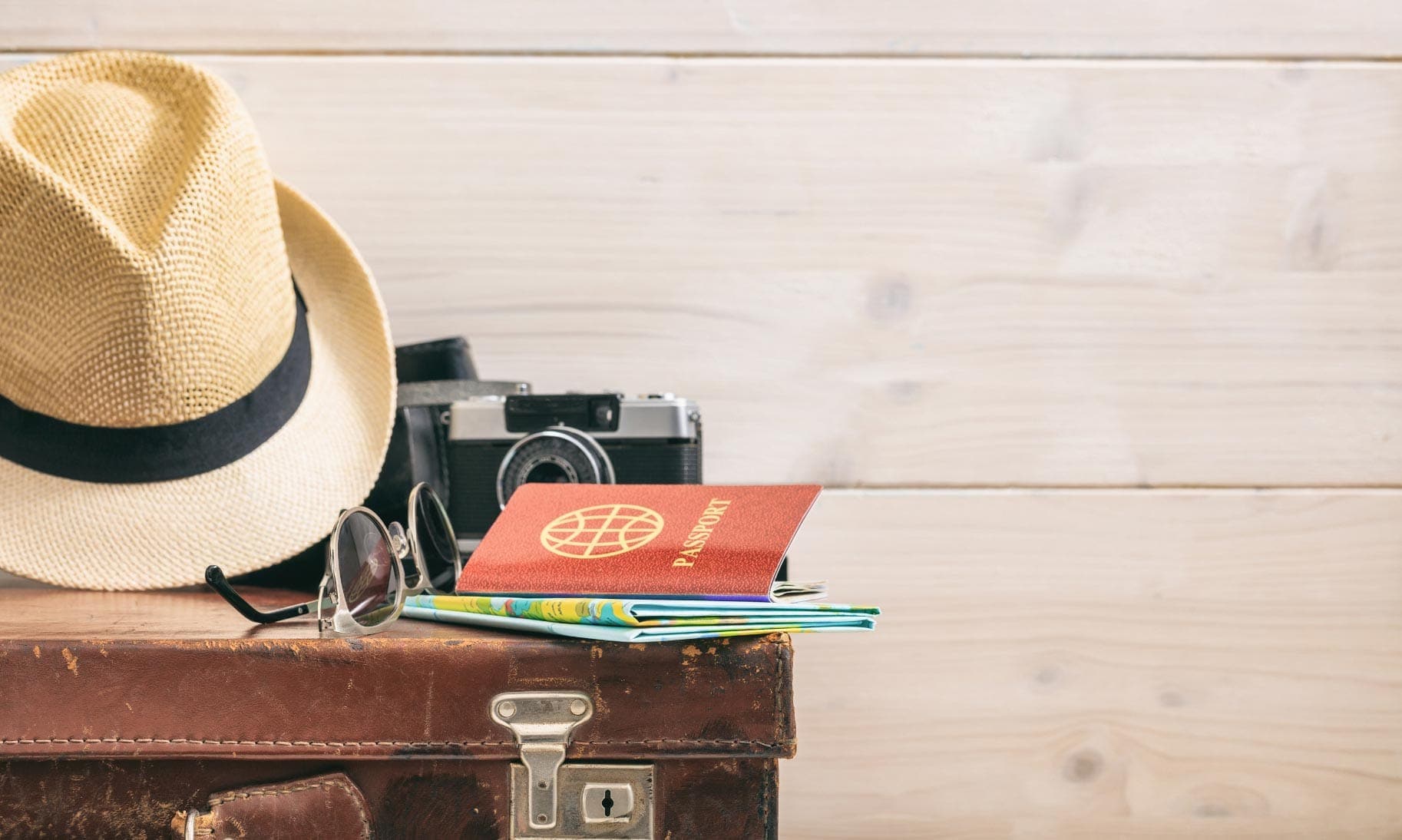
The MiniMed™ 780G system makes travel easier

Travel tips while living with diabetes
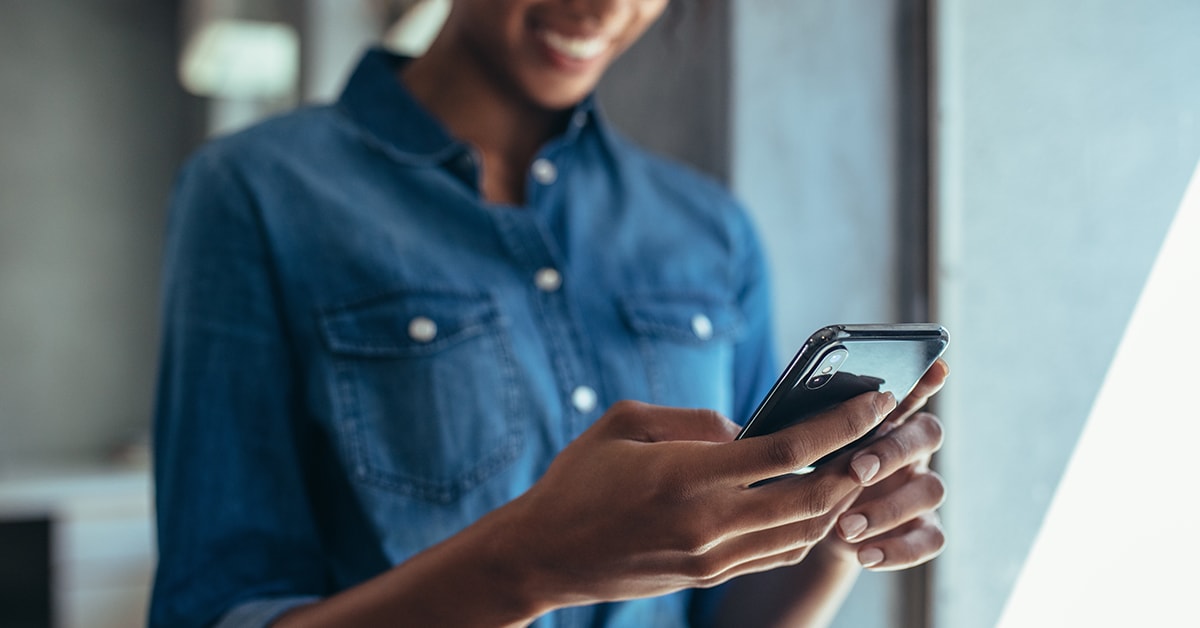
Top tips for your medical device apps
About author.

LOOP Blog Editorial
Medtronic Diabetes is dedicated to helping people get more out of life by creating innovative technologies and providing extraordinary support so you can manage diabetes on your own terms.
Blog comments
I just got back from San Francisco. I had no problems with my pump or my meter. I went through the body scanner, and all they did was have me rub my hands over my pump and then wiped my hands with some kind of cloth. I'm told it was to check for gunpowder or explosive residue. Just make sure to tell them before you go through the scanner.
Sherri, thank you for sharing your travel experience with us. I’m glad to hear you didn’t have any issues going through TSA with your pump or meter.
Body scanners: are they X-ray
I just got back from Cleveland/New Jersey. I experienced the same hand-rubbing procedure. I lifted my shirt to display my infusion site but they said you don't have to do that, sir.
I made sure to pack everything I could think of, including backups... an insulin vial, infusion sets, CGM sets, tape, inserters, recharger, glucometer and strips, a spare battery, an insulin pen with spare needles, and a bottle of glucose tablets. I also made sure the bag was a carry-on as opposed to being checked and stored in a part of the plane I'd be unable to reach inflight (which would also potentially be exposed to tens of degrees below-zero conditions).
My sensor conked out during my trip in the middle of a seminar. During a break, I changed it because I had everything with me. At the airport, my plane was delayed and my pump battery ran out. I popped a new one in.
I won't say I didn't have a few moments of panic (such as when I thought my glucometer fell out of my pants in the plane, which I had departed). But overall everything was smooth. I had read about pressure differentials during takeoff and landing affecting basal delivery from the pump ("baggage check lows"), but that didn't happen. And I got plenty of exercise by deliberately running around the airport.
It sounds like you were well prepared, Jonathan! I’m happy your travel was smooth sailing.
I've flown many times, even overseas and back, without any problems or questions. You are allowed a medical bag that does not count as carryon, so be sure to keep that bag as only medical.
I’m glad to hear you’ve had smooth traveling experiences throughout the years, Candice. Thank you for sharing your helpful travel tip with us.
Ive had 2 issues with pump failure after traveling. I no longer go through any scanners and always opt out when I travel. I now ask for a pat down each and every time I travel. I have a Medtronic 523. I will never chance going through a scanner again. Better tp.be safe than sorry.
Joel, I’m sorry to hear you’ve had pump failure after traveling. If you don’t want a pat down, you can walk through the metal detector with your insulin pump and CGM. Just be sure to not take your pump through the new body scanners or put it on the x-ray belt. Please let me know if you’re currently experiencing any issues with your pump, and I’ll have a member of my team connect with you.
To avoid a pat-down and the chance of damaging my pump, I have used this method at TSA checkpoints in many domestic airports. Suspend the pump and remove the reservoir. Hand the pump to a TSA agent and ask for a "hand check". Then go through the body scanner. They will pat the infusion site and may swab your hands for further screening, but no complete pat-down. The will hand the pump back, then I re-insert the reservoir and restart the pump. PS. Most TSA agents will try to convince you that their machines will not harm your pump...but I don't want to risk damaging my pump when I'm headed away from home!
Thanks for these tips Craig. I'm curious why you remove the reservoir, or is that the only way you are able to disconnect from the pump? (i have quick connections at the insertion site so I often unclip my pump). Mainly, I wondered if there was some reason to not give them the insulin reservior?? thanks.
I don't have to takeep insulin or pills, I just need to test 3 times a week for the next 3 months. Can I just put my monitor on suitcase under the plane.?
Hi Charlyn - that is a personal preference. The reason some diabetes supplies are suggested to keep with you is in the event that luggage is lost. Just something to keep in mind.
I use insulin pens and needles. Do I have to have the prescriptions with me?
"If you do go through an airport body scanner, be sure to remove your insulin pump and CGM, but do not send your devices through the x-ray machine as an alternative. "
"remove your CGM????" That is crazy talk - even if by this you mean to just remove the transmitter, I always have mine well-taped down and removing it for the airport security would be difficult to say the least. so, is it that you/we simply don't know if the transmitter will be impacted or you do know that they are negatively impacted???
Now that I've read this story and comments, I will surely be more careful with my pump (530G) and have TSA hand check it through, however, I've either sent it through the x-ray or kept it on my body and walked through many a body scanner with nary a problem. I guess I've just been lucky?
Hi Larkspur, here is a great chart for what items to remove due to equipment interference: https://www.medtronicdiabetes.com/customer-support/equipment-interferen… .
thank you Karrie.
You're welcome!
I do not have an insulin pump. I do daily injections. Will I be allowed to carry syringes on my person?
Yes! I've always carried my insulin and my needles in my carry-on. I just make sure my insulin is in the box that it came in with the prescription on the box saying that it's mine. They've never check my medicines but just in case.
More confused now. OK, so my 523 pump can't go through the body scanner. If I can go through a metal detector instead, then I can either leave pump on and go through, or take pump off (disconnect at infusion site), give it to TSA agent to hand inspect?, what? If I disconnect from pump to go through a metal detector, what do I do with the pump?
What do I do with my supplies bag? It's got everything to change a sensor and my reservoir, plus a vial of insulin and so forth. What do I do with it? Are all those parts okay to go through the xray on the belt, or do I have to ask them to hand-inspect my whole supplies bag?
Hi Jack - here is a great chart on equipment interference. You can go through an airport metal detector: https://www.medtronicdiabetes.com/customer-support/equipment-interferen… . Another option is asking for a pat down.
I have traveled quite a bit and here is my plan and other options for TSA. I have an insulin pump and CGM.
Option 1 with Pump only: Prior to having a CGM and when I was just on a pump I would disconnect at my site, and suspend my pump, just so I don't leak insulin on the TSA agents. I would let the TSA agent know that I had a pump. I would let them know that it cannot go through xray or body scanner. Sometimes they tell me that it is safe, but I just tell them the manufacturer of the pump says it cannot, this usually shuts them up. Then I place my pump into a small bin and hand it to an agent, watching them take it around the scanner and xray, not through it. I go through the scanner and then meet the agent on the other side. They then usually make me touch the pump, then they scan my hands and the pump with a hand held device. I then reconnect and I'm on my way.
Option 2 pump only: Opt out. They hand frisk you, make sure to let them know about your pump, you are not required to disconnect it if you do not want to. They will then scan your hands again.
Pump and CGM option 1: If you want to have you CGM in place, obviously it is inconvenient to disconnect the CGM sensor with all the adhesive, so your only "safe" option is to opt out. Let them know about your sensor and pump, they will hand pat the area and you and then scan your hands. I have not found that any TSA agent will let me walk through a metal detector in lieu of the body scanner and or patdown if the body scanner is working (but this is my experience)
Pump and CGM option 2: If you time your sensor replacement right, you could go to the airport without a CGM sensor in place but bring everything with you. Follow what I do in Option 1 with pump only, but hand them your pump AND your CGM sensor. Then after your hands are cleared and you are on your way, go to the bathroom and insert a new sensor. If you already had a sensor in place, you could always remove the tape prior to arriving to the airport, pop out the actual sensor and leave the inserted part in and then pop is back and secure with tape after you clear security.
FYI: Yes you can keep insulin and needles on your person, keep them in your carry on. If traveling with somebody, give them some supplies too in case you lose/forget your carry on. I've never had an issue, they can all go through xray. Never check insulin or supplies, temperatures can get very cold in the baggage area of a plane, also the airlines may lose your stuff. I usually don't travel with a RX in the US, but that doesn't mean that you shouldn't. I'm about to go to Thailand with some in country flights and I will bring one just in case Thai security has questions. Pack extra. The main pump companies offer loner programs, so you can get a pump sent to you to bring as a back up, HIGHLY recommended...just make sure it does not go through xray or the body scanner. Bring double the supplies you think you will need.
Rule of thumb: BE AN ADVOCATE FOR YOURSELF! Don't let TSA bully you. This has happend to me once in LAX. I followed option 1, but a new TSA agent was confused and brought me over to a supervisor who kept asking me why I disconnected my pump. For some reason he wanted to make a big deal over it, I just told him sternly that this is how I have done it for 15 years prior without an issue and that he obviously did not understand his policy and procedures ( I don't recommend telling a TSA supervisor that, but I felt he needed an education). He gave me back my pump and I was on my way.
I hope someone can find this info useful!
-Chris Type 1 since 2001, doesn't stop me from anything
I have quite a few miles of air travel. TSA procedures are usually pretty straightforward, but there’s always a chance of getting a “gung-ho” agent who takes things to the extreme. As far as carry on supplies, it all goes thru the X-ray machine, no questions asked. I always go through the scanner with pump and sensor on, just get the hand swab and maybe a short pat down. The ONE time I opted for X-ray rather than scanner turned into a nightmare. First, I had to BEG to go thru X-ray because the precheck passengers get priority. I got through, they did the hand swab and the “enhanced” TSA massage. Then they opened all my carry-on, did a cursory sort and told me to wait right there. After 5 minutes, a couple of women agents took me and all my stuff into a private room. They did a far more “enhanced” pat down and also a thorough wanding for good measure. (I was allowed to keep my clothes on). The other one went through all my stuff, swabbing the insides and putting the samples into a huge machine. They were very nice about the whole thing, but I was getting nervous. What the heck are they looking for??? A half hour later they said I was free to go. I asked what set off this whole thing and the agent replied that sometimes the machines pick up something that isn’t really there. I would have liked to know what the exact substance they were looking for, but I didn’t want to push my luck or miss my flight. It was also a good thing that I got to the airport early instead of my usual last minute arrival. So yeah, it’s scanner forever for me.
[…] How To Get Through TSA With These 5 Diabetes Devices | The. – Aug 4, 2015. The TSA allows for diabetes-related supplies, equipment and. 2. Insulin Delivery Devices. Be sure to have proof a physician. people with diabetes may take their insulin, other medications such as. TSA website for up to date security checkpoint and travel guidelines, 15 Years with Type 1 Diabetes. […]
I have to travel internationally with an insulin pen can I take the single pen without the box as I don't need all my pens? I only need 8 days supply and needles.
Edwin, I'd recommend double-checking with the TSA directly, but you may consider taking only as many pens as you need and putting them in their original box when you travel.
Kindly if I have plan to travel more than 12 hrs . I need to carry out plenty of insulin pins for my usage for a long period. MY question is if I carry out a portable cooler and put it with checking bags. Is it acceptable in airports or not? Specially it is working by 12 V.
Regards Reda Gayed
Reda, this is a good question for your local airport or TSA directly. They can let you know what is and isn't allowed. Enjoy your trip!
Hello, I work in offshore and I will bring a glucometer with me with some strips, would it be a problem? I will bring it home for my dad who has diabetes.
Xander, you shouldn't have any trouble traveling with a glucometer, but we always recommend checking with TSA or your airline for specifics.
This is completely unacceptable; You need to figure out how to make cgm sensors and pumps that can go through the full body scanners. Dealing with diabetes in the first place as well as the crippling costs that you for-profit companies extort from us is enough without having to be subjected to the humiliation of having to be felt up by some TSA officer most likely due in large part to your lawyers not approving language that says your equipment can go through the scanners. You had nearly $30 billion in revenue last year; don't tell me you can't figure this out!
Matt, we are always working on ways to improve our products and appreciate your feedback. Because the nature of our medical devices they shouldn’t be exposed to any strong magnetic field. A magnetic field can damage the internal components of your device and it can become non-functional or fail to regulate your insulin dosage. We recommend reaching out to TSA for alternatives to the body scanners and pat downs.
Just had a horrible airport experience at Lyon France with my Medtronic XXX pump! Arriving at the trays I emptied my pockets as normal and then proceeded to a member of staff to say I had my pump and would prefer not to go through the scanner. They basically said I had to, said they didn’t speak English so couldn’t understand me, then told me (all in perfect English) they had asked the policeman and he said go through or don’t go on the flight. They said the laws in France had changed in the week id been away!! They were not very pleasant about it and wrote something in a file with my boarding pass , I am assuming this was a complaint. Our transfer had been delayed as it was and I knew I didn’t have much time so eventually I went through the scanner. Are the scanners all the same? Should I have gone through? It was an archway scanner where you just walk through,not the type where you stand still, raise your hands and then it scans you. Afterwards my pump seems fine. I do fly quite a lot and have never had this problem, they normally let me through a gate and swab my pump. Should I have gone through? Sorry for the long message - think I need a coffee!!
Hi, Andrea. I'm sorry for the delay in response and for such a difficult experience at the airport. We don't recommend taking your pump through body scanners or the x-ray conveyor, to prevent potential pump malfunctions. Keep in mind, they are safe to be worn around metal detectors and hand wands. I'm glad to hear your pump is still working, but we're here to troubleshoot if you have any concerns. Grab that cup of coffee and give us a call at 800.646.4633, option 1.
I agree. I just tried coming through Ft Lauderdale and handed them everything to hand inspect. I went through full body scanner and when I came out on the other side, they had tested my pump in another type of machine, which worries me, and told me it failed and needed to be put through the scanner. I refused and told them the manufacturer said it can not go through X-ray and body scanners. They said policy required it to go through the X-ray/scanner if it failed the test, or I needed to go back out. I said I live in Virginia, not Florida, and I had no problem with TSA in Raleigh. I said somebody who knows more about this needs to look at this cause I know I'm not the first person to come through here with an insulin pump. Finally they inspected all my luggage, took my pump apart, and patted me down, embarrassing my son. Why did my pump fail a hand inspection? These insulin pump companies need to work out something with TSA.
Thank you for sharing your experience, Barbara, I'm sorry it was a difficult one. Unfortunately, I don't know the specifics of TSA inspection process, but know we have shared feedback our products with the appropriate agencies. Let us know how your next adventure goes!
I AGREE!!!!
I have the 670G, as of January of 2018. Previously, I had been pumping with Medtronic devices since 2002. I am finding the new airport screening requirements very bothersome. I have had a couple of instances where I have had to wait 10-15 minutes for someone to come while I stand there with all of my items either already through the xray or holding up the line. It doesn't sound like a big deal, but I don't like to create a spectacle of any kind around my diabetes, so this new requirement that I cannot go through the body scanner and my sensors have to be hand inspected also, is very bothersome to me. I would appreciate it if Medtronic would do some work to ensure that the sensors and transmitter are safe to go through the body scanners or work to get exceptions for people with these devices to be waived from the body scanner requirement and required instead only to go through the metal detector. While I was held up waiting for a pat down last week, a mother and her two small children were able to go through the metal detector rather than the body scanner, so clearly there are exceptions in place.
We appreciate the feedback, Chris. Metal detectors and wands are ok for your pump, but I can't speak to TSA's exception policy. I understand the frustration and I've shared your comments with our team.
This will be my first flight and I'm very worried about my medicines. I have diabeties and only take 2 pills aday. I need my meter and lancets and strips do I put them in my small baggy to use up my little space for other stuff. Or can I put in my purse as carry on. Read so much on this different answers. Flying on delta to texas
Thanks for reading our blog, Karen. We recommend putting all of your supplies and other medicines in your carry on and check with your local airport or TSA for options approved carry on rules. Good luck and enjoy your trip!
Clearly all airports are not the same when it comes to TSA and diabetic pumps. Denver TSA agents were complete jerks!
Since I never see this information online (and I haven't checked the leaflet in the box yet), is it safe to send your supplies for the insulin pump and CGM (the sensors) through the airport bag x-ray machine? I always see that you should remove your CGM & sensor if you have to go through the body-scanner but never anything about whether it's safe to send all your supplies through the bag x-ray thing.
Hi, Lorien. Your supplies are safe to travel with. You should disconnect your insulin pump for an airport body scanner. Check out our website for all of the information you need for traveling and airport security at http://bit.ly/LiIqzf . We hope you enjoy your next trip!
I am confused! You say that my pump and CGM can be worn through the whole body scanners, but not the xray ones? How does one know one from the other? I have always been told by the TSA that I can go through the scanner without removing my pump. I always ask for a pat own. I do not want to risk having wither one of these items damaged by going through. Also traveling with a travel loaner pump, my question is this since it is still in a plastic wrap from the factory do I have to take it out of that and take it through the pat down?
Gwynne, you shouldn't take your pump through the body scanners or put it on the belt to go through the x-ray. When carrying a travel loner pump, it should also be removed from your luggage, and not be subjected to the scanner or x-ray conveyor. Your pump is safe for use around metal detectors and hand wands. If you have questions about the type of scanner being uses, TSA should be able to answer any questions you may have, to allow you to make an informed decision about your devices. You can also learn more about traveling with your pump and CGM here: http://bit.ly/LiIqzf
My husband is travelling from uk to Vegas next wk. She uses an insulin pen and has a XXXXXXXXX XXXXXsensor. Will this be an issue at security?
Hi, Laura. For many customers, traveling with diabetes products is no different than other travelers. I encourage you to check with your international version of TSA for specifics. For travel within the US, you can learn more from the Transportation Security Administration here: www.tsa.gov
Hi, I'm a bit surprised by some of the information given under #4, Glucagon.
4. Glucagon "Similar to insulin, you may carry your glucagon in its original, pharmaceutically labeled container through airport security. Although TSA allows multiple containers of liquid or gel to treat hypoglycemia, you may want to consider alternative forms of carbohydrates, including glucose tablets, hard candy, or raisins, for ease of travel."
While it is always a good idea & recommended to have alternative forms of carbohydrates with you, none of those alternative forms of carbs are a replacement for Glucagon. If a person with diabetes is unconscious or unable to ingest & swallow food/swallow liquids (due to extreme hypoglycemia), that is the only time when Glucagon should be used or call for emergency help. To me, #4 read as if those alternative forms of carbohydrates were in fact possible replacements for Glucagon, which they are not. And that is the point I was trying to make.
Post a new comment
21 Tips for Traveling With Diabetes

Plan ahead for more fun and fewer worries.
Don’t let good diabetes management go on vacation just because you did. Traveling to new places gets you out of your routine—that’s a big part of the fun. But delayed meals, having unfamiliar food, being more active than usual, and being in different time zones can all disrupt your diabetes management. Plan ahead so you can count on more fun and less worry on the way and when you get to your destination.
Before You Go
- How your planned activities could affect your diabetes and what to do about it.
- How to adjust your insulin doses if you’re traveling to places in a different time zone.
- To provide prescriptions for your medicines in case you lose or run out of them.
- If you’ll need any vaccines.
- To write a letter stating that you have diabetes and why you need your medical supplies.
- Just in case, find pharmacies and clinics close to where you’re staying.
- Get a medical ID bracelet that states you have diabetes and any other health conditions you may have.
- Buy travel insurance in case you miss your flight or need medical care.
- Order a special meal in advance for the flight that fits with your meal plan, or pack your own.
- Put your diabetes supplies in a carry-on bag (insulin could get too cold in your checked luggage). Think about bringing a smaller bag to have at your seat for insulin, glucose tablets, and snacks.
- Pack twice as much medicine as you think you’ll need. Carry medicines in the original pharmacy bottles, or ask your pharmacist to print out extra labels you can attach to plastic bags.
- Be sure to pack healthy snacks, like fruit, raw veggies, and nuts.
- Get an optional TSA notification card [PDF – 23.8KB] to help the screening process go more quickly and smoothly.
- Good news: people with diabetes are exempt from the 3.4 oz. liquid rule for medicines, fast-acting carbs like juice, and gel packs to keep insulin cool.
- A continuous glucose monitor or insulin pump could be damaged going through the X-ray machine. You don’t have to disconnect from either; ask for a hand inspection instead.
- Visit CDC’s Travelers’ Health site for more helpful resources.
- Doctor’s letter and prescriptions
- Snacks and glucose tablets
- Extra insulin and diabetes medicines
While You’re Traveling
- If you’re driving, pack a cooler with healthy foods and plenty of water to drink.
- Don’t store insulin or diabetes medicine in direct sunlight or in a hot car; keep them in the cooler too. Don’t put insulin directly on ice or a gel pack.
- Heat can also damage your blood sugar monitor, insulin pump, and other diabetes equipment. Don’t leave them in a hot car, by a pool, in direct sunlight, or on the beach. The same goes for supplies such as test strips.
- Fruit, nuts, sandwiches, yogurt
- Salads with chicken or fish (skip the dried fruit and croutons)
- Eggs and omelets
- Burgers with a lettuce wrap instead of a bun
- Fajitas (skip the tortillas and rice)

Say goodbye to worry when you pack your diabetes supplies in a carry-on bag.
- Stop and get out of the car or walk up and down the aisle of the plane or train every hour or two to prevent blood clots (people with diabetes are at higher risk).
- Set an alarm on your phone for taking medicine if you’re traveling across time zones.
Once You’re There
- Your blood sugar may be out of your target range at first, but your body should adjust in a few days. Check your blood sugar often and treat highs or lows as instructed by your doctor or diabetes educator.
- If you’re going to be more active than usual, check your blood sugar before and after and adjust food, activity, and insulin as needed.
- Food is a huge highlight (and temptation!) on a cruise. Avoid the giant buffet, and instead order off the spa menu (healthier choices) or low-carb menu (most ships have one) or order something tasty that fits in your meal plan from the 24-hour room service.
- Don’t overdo physical activity during the heat of the day. Avoid getting a sunburn and don’t go barefoot, not even on the beach.
- High temperatures can change how your body uses insulin. You may need to test your blood sugar more often and adjust your insulin dose and what you eat and drink. Get more hot-weather tips here .
- You may be unable to find everything you need to manage your diabetes when you are away from home, especially in another country. Learn some useful phrases in the local language, such as “I have diabetes” and “where is the nearest pharmacy?”
- If your vacation is in the great outdoors, bring disposable wipes so you can clean your hands before you check your blood sugar.
Making Memories
Diabetes can make everyday life and travel more challenging, but it doesn’t have to keep you close to home. The more you plan ahead, the more you’ll be able to relax and enjoy all the exciting experiences of your trip.
- CDC’s Health Information for Travelers
- Diabetes Basics
- Living With Diabetes
- Diabetes Features
- CDC Diabetes on Facebook
- @CDCDiabetes on Twitter
To receive updates about diabetes topics, enter your email address:
- Diabetes Home
- State, Local, and National Partner Diabetes Programs
- National Diabetes Prevention Program
- Native Diabetes Wellness Program
- Chronic Kidney Disease
- Vision Health Initiative
- Heart Disease and Stroke
- Overweight & Obesity
Exit Notification / Disclaimer Policy
- The Centers for Disease Control and Prevention (CDC) cannot attest to the accuracy of a non-federal website.
- Linking to a non-federal website does not constitute an endorsement by CDC or any of its employees of the sponsors or the information and products presented on the website.
- You will be subject to the destination website's privacy policy when you follow the link.
- CDC is not responsible for Section 508 compliance (accessibility) on other federal or private website.

An official website of the United States government
Here’s how you know
Official websites use .gov A .gov website belongs to an official government organization in the United States.
Secure .gov websites use HTTPS A lock ( Lock A locked padlock ) or https:// means you’ve safely connected to the .gov website. Share sensitive information only on official, secure websites.
Travel Tip: Traveling with Diabetes
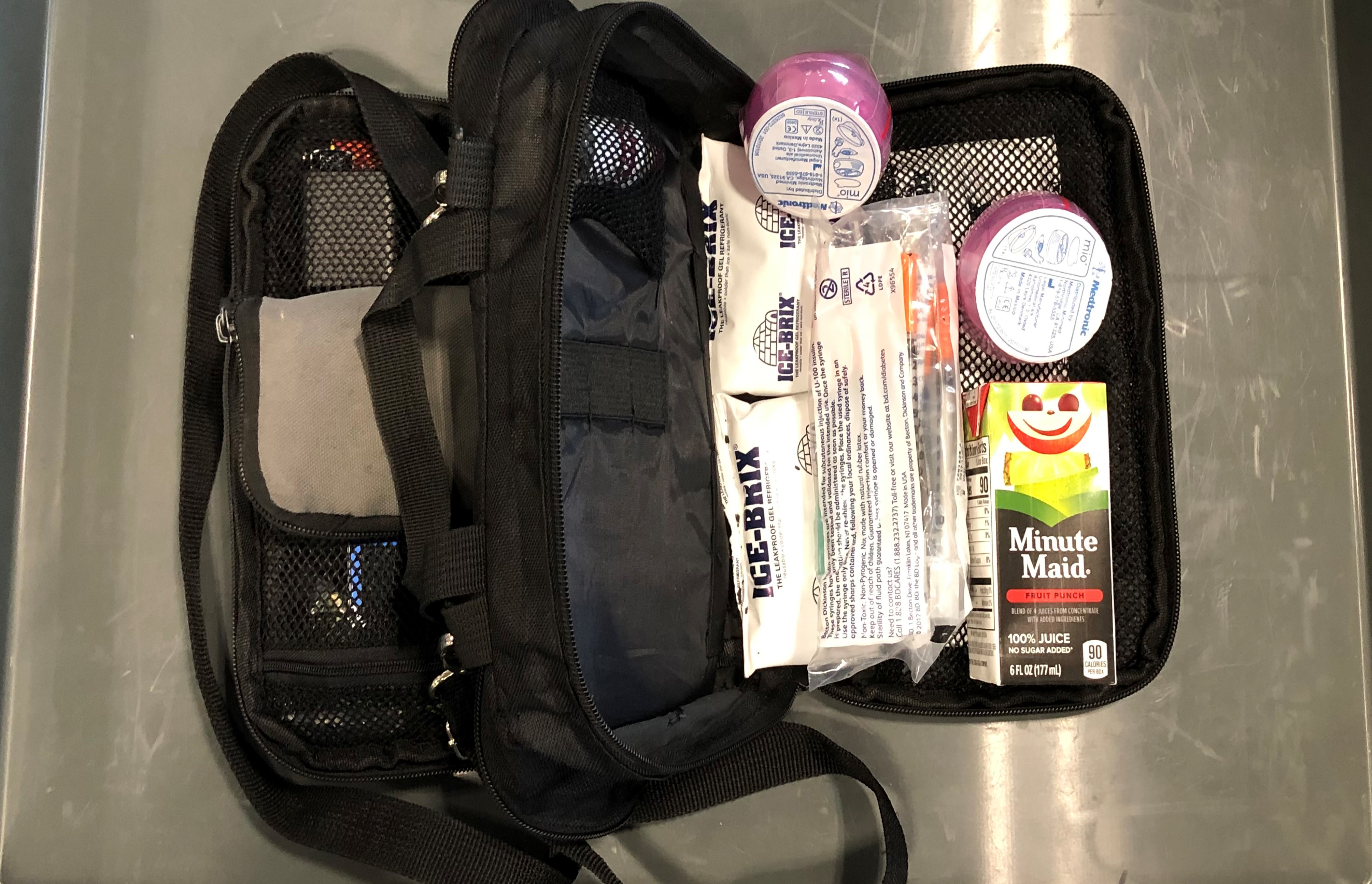
November 14th is World Diabetes Day so we thought it was the perfect opportunity to talk about traveling with diabetes. We know that traveling with medical supplies can be a nerve-wracking experience, especially when your medication includes needles and other sensitive equipment. So here are some tips to help make your trip as smooth as possible.
Notify the Officers
When you arrive at the checkpoint, let our officers know about your medical device and any other equipment prior to screening. If you have an insulin pump, glucose monitor or other medical device attached to your body, inform the officers where it is located before the screening process begins. Although not required, you can provide them with a TSA notification card prior to screening to discreetly describe the medical condition.
If you have questions or concerns at any time during the screening process, please ask to speak to a supervisor.
Screening Process
Passengers in standard lanes may be screened by advanced imaging technology, metal detector or a pat-down. If the standard lane does not have advanced imaging technology, or if you are eligible for expedited screening through TSA PreCheck ® , you may be screened by a walk-through metal detector. If you do not wish to go through screening by technology, inform the TSA officer and they will conduct a pat-down. Pat-downs are conducted by a TSA officer of the same gender, and you may request private screening at any time.
You will not be required to remove any medical devices attached to your body.
Medical Supplies
If you are traveling with medical equipment or supplies, they will need to undergo separate screening. The TSA officer will check the supplies and conduct any necessary testing. If your medical condition requires it, you are allowed to travel with a juice box or other liquid over 3.4oz., but be prepared for the liquid to receive additional screening.
In the event that your insulin pump or glucose monitor is attached to your body, the device is subject to additional screening, including visual inspection. You may be required to conduct a self pat-down of the actual device, followed by a test of your hands for any trace of explosives.
Still have questions? Visit our website for additional information.
If you have any additional questions or need assistance at the checkpoint, reach out to TSA Cares at 855-787-2227. Simply call 72 hours prior to your trip or visit our TSA Cares website . Knowing more about the process may help to relieve any stress and anxiety!
About This Blog
The purpose of this blog is to share the latest news and helpful information with the public. If you have questions about TSA or the information presented here, please contact our AskTSA customer care team on Twitter or Facebook .
TSA is committed to protecting privacy and securing personal information. For details, see our website Privacy Policy .
Stay informed on our latest news!

- Health Sections Men Women Children Seniors Diabetes Cancer Asthma Blood Pressure Cholesterol Stroke Medicine & First Aid Head & Neck Heart & Lungs Digestive System Bones & Joints Hormones & Thyroid Food & Nutrition Fitness & Exercise Wellness Healthcare Financing Transplant
- Media News Video
Essential Guide
travelling with diabetes: how to pack your insulin.
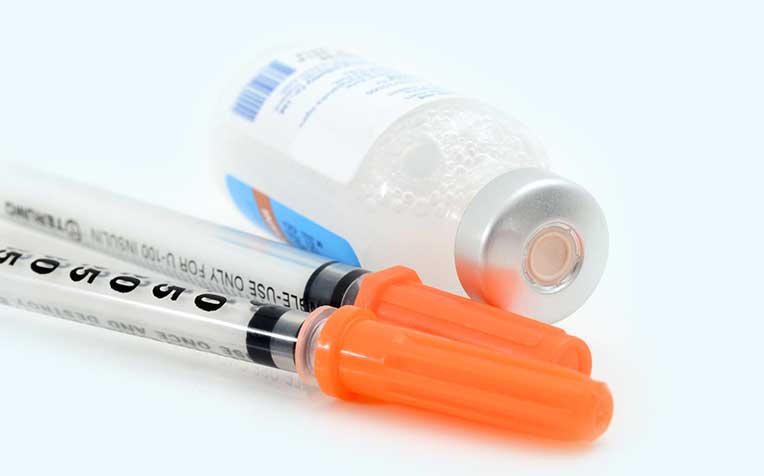
should be handcarried and not checked in.
Information provided by the Department of Endocrinology at Singapore General Hospital (SGH), a member of the SingHealth group.
Pack your insulin in an insulated bag to prevent damage. Do not check in your insulin, diabetes medication and consumables . Keep them in your hand-carry luggage.
Follow these steps to help airport security staff process your hand luggage easily:
- Keep your insulin in their original vials.
- Pack your medication separately from your toiletries.
- Have your doctor's letter and prescription on hand.
To store your insulin properly and keep it cool, you need:
- Insulated cooler bag
- Reusable ice gel packs
- Thin hand towel to wrap around the ice gel packs (if the insulated bag has no compartments)
How to keep insulin cool while you travel
Do not check in your insulin . The insulin will freeze in the luggage hold and alter its effectiveness.
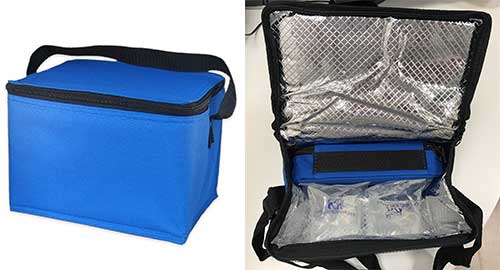
Put your insulin in the inner compartment of your insulated bag (to be hand-carried with you onboard the plane).
Store the refreezable ice gel pack in the pouch compartment. If there is no compartment to store the ice gel packs, place a hand towel on top of the ice gel pack, and the insulins on top of the towel.
When you arrive at your destination, unopened insulin pens/cartridges/vials should be kept in the fridge.
See previous page for an essential diabetes packing checklist .
Ref: L20
Other diabetes articles you may be interested in:
Hypoglycaemia (Low Blood Glucose): Warning Signs and Symptoms
Diabetes Foot Care Tips: 10 Steps to Healthy Feet
Diabetes Diet Myths vs Facts
Easy Diabetes Diet
Because #healthiswealth #healthforgood

Terms of Use / Disclaimer All information provided within this web and mobile application is intended for general information and is provided on the understanding that no surgical and medical advice or recommendation is being rendered. Please do not disregard the professional advice of your physician.
Sharing is caring!

Sign up today!
Diabetes: Signs of Gum Disease and Tips
Diabetic Guide to Travelling
Trending Now
Managing Lower Back Pain - Doctor Q&A
Obesity and Emotional Eating
8 Must-know Caregiver Tips for Neurological Disorders
Menopause - Doctor Q&A
Cataract - Doctor Q&A
You May Also Like
Fasting Tips for Diabetics
Must-Know Tips to Beat Diabetes
7 Tips to Manage Diabetes During CNY
High Blood Pressure (Hypertension): How to Lower It Naturally
Prevent & Manage Diabetes - Doctor Q&A
Did You Know?
Our Contributors
- Terms & Conditions
- Privacy Policy
- Personal Data Protection Act (PDPA)
- Report Vulnerability
- Testimonials

- Pioneer: Travel Refrigerator for Insulin & Refrigerated Drugs
- Voyager: Travel Fridge for Insulin & Refrigerated Drugs
- Explorer: 72 Hours Insulin Cooler 3-in-1 Medicine Travel Cooler
- Nomad: Portable Cooler for Insulin & Medications
- Rambler: 12H Small Cooling Case for Daily Use
- Companion: Soft Medical Cooler Bag (36-79F / 2-26C)
- Vial Guard: Insulin Vial Protector Cover
- Pioneer Cooler Extra Battery
- Buddy: Big Biogel Ice Pack for Medicine Coolers
- Buddy: Medium Biogel Ice Pack for Medicine Coolers
- Buddy: Small Biogel Ice Pack for Single Pen Coolers
- ChillMate: Cooling Lid with Auto Shut-Off and Temperature-Display
- Ice Cap: Cooling Lid for Room Temperature
- Tripper: Carrying Bag for Medicine Coolers
- Pathfinder: 20000 mAh Power Bank for Electric Medicine Coolers

The easy way to travel with your medication
You're tired of dripping ice coolers and hotel fridges. But you need a stressless way to travel with your medication. So it's time you meet 4AllFamily.
- Traveling With Medication
- Refrigerated Drugs
- View all articles
- Rheumatoid Arthritis
- Crohn's Disease
- Growth Hormones
- Osteoporosis
- Weight Loss
- Erectile Dysfunction
- High Cholesterol
- Multiple Sclerosis
Add a note to your order

72 Hours Insulin Cooler 3-in-1 Medicine Travel Cooler
The Explorer is a versatile and reliable, our all-purpose cooling case designed to accommodate various needs, making it the perfect solution for storing a wide range of temperature-sensitive medicines
- USB powered
- 72 hours of refrigeration
- Holds 42 humulin vials
- TSA approved

Extended Warranty Explorer
Note: 1 Year Free Warranty is already included. Warranty calculation is as following: 1 Year + X amount Extra You Purchase.

Cooler dimensions: 3.3" diameter, 8.9" height. 900ML inside volume Package dimensions: 10.2 x 7.6 x 4.1 inches Material: Stainless Steel 304 (food grade)
The key to getting the most out of your insulin travel cooler is to understand how and when to use each cooling method. 1. BIOGEL FREEZE PACK + USB LID: CHILL YOUR MEDS FOR UP TO 3 DAYS! This is by far one of the most powerful refrigeration solutions. It keeps your insulin and medicines cool for up to 3 days. You will use both the USB lid and the Biogel Freezing pack in combination. Our laboratory cooling performance tests showed the following results: At 104°F / 40°C, our cooler keeps medicine refrigerated between 36-45°F / 2-8°C for 50 hours and cool below 79°F / 26°C for 70 hours At 95°F / 35°C: our cooler keeps medicine refrigerated between 36-46°F / 2-8°C for <b>52 hours</b> and cool below 79°F / 26°C for 73 hours. At 86°F / 30°C: our cooler keeps medicine refrigerated between 36-45°F / 2-8°C for 55 hours and cool below 79°F / 26°C for more than 3 days. For even higher cooling performances, have a look at our upgraded <a href="https://4allfamily-staging.myshopify.com/products/portable-medical-fridge-usb-insulin-medicines" Voyager: Travel Fridge for Insulin & Refrigerated Drugs. 2. BIOGEL FREEZE PACK ONLY: KEEP MEDICINE COOL WITHOUT ELECTRICITY! This is the ideal way to keep your meds cool when you don't have access to electricity. Suppose you're at the beach, traveling by plane, or spending a few hours in town, and it's 104°F / 40°C outside. The Biogel Freezing pack cooling method does not require any power source. It works as a super-powerful thermos bottle with the following refrigeration performances: At 104°F / 40°C: The Biogel Freeze pack insulin cooler maintains fridge temperature 36-45°F / 2-8°C for 28 hours and stays cool below 79°F / 26°C for 46 hours. At 95°/ 35°C: the Biogel Freeze pack insulin cooler maintains a fridge temperature of 36-45°F / 2-8°C for 30 hours and stays cool below 79°F / 26°C for 50 hours</b>. At 86°F / 30°C: the Biogel Freeze pack insulin cooler maintains a fridge temperature of 36-45°F / 2-8°C for 32 hours and stays cool below 79°F / 26°C for 52 hours. We include one Biogel freezing pack with each cooler. Customers usually want to keep a second unit in their freezer ready all the time while they have one in use, so they just need to change them and are ready to go anytime! If you need a second one too, href="https://4allfamily-staging.myshopify.com/products/4allfamily-insulin-cooler-biogel-ice-pack"you can purchase extra ones here. 3. USB LID ONLY: KEEP MEDICINE COOL WITHOUT ICE! The USB lid allows you to keep your insulin and medications cool without freezing or refreezing the Biogel pack. It can only run when the outside temperature is at max 86°F / 30°C and gives the following cooling results: At 86°F / 30°C: the USB portable medicine cooler is able to lower the inside temperature to 25°F / 15°C from the outside temperature. This means it keeps the interior temperature between 46-79°F / 8-26°C "forever" due to its cooling function. Our Voyager: Travel Fridge for Insulin & Refrigerated Drugs is more powerful and capable of keeping your insulin at fridge temperature, whatever the outside temperature is.
We offer free shipping within 2-4 business days in the United States, Canada, and Australia. In India, we offer free shipping, but only on our Amazon Store. For other international regions, we offer expedited shipping that takes 2-7 business days and standard shipping that takes 10-20 business days. Shipping Policy
Keep your medicines at fridge temperature
The key to getting the most out of your insulin travel cooler is to understand how and when to use each cooling method.
3 COOLING METHODS IN ONE COOLER FOR INSULIN AND INJECTABLE MEDICINES
This insulin cooler’s distinctiveness comes from the 3 different cooling methods it offers. Whether or not you have access to power - whether or not you can freeze icepacks – there’s a solution for you to chill your meds and insulin in all situations. Switch the lids and go from a Biogel thermos cooling bottle to a real USB-powered portable medicine fridge in no time. Alternatively, use the USB lid, the Biogel freeze packs, or both simultaneously to obtain maximum refrigeration efficiency and duration!
HOLDS UP TO 7 STANDARD INSULIN PENS AND 42 HUMULIN VIALS
With a 3.3" diameter and a gross volume of 900ML, our insulin cooling case offers a large storage capacity for your medicines. You can fit up to 7 insulin pens, 42 humulin vials, or 8 novolog vials. The cooler is compatible with most injectable medicines that need refrigeration and is perfect for people traveling with large quantities of medications. If you're looking for a smaller, more compact insulin cooler, check out our new product Nomad: Big Portable Cooler for Insulin & Medications Portable Cooler .
COMPATIBLE WITH ANY USB POWER SOURCE
The USB lid is compatible with any power source and can be plugged into a car cigarette lighter, portable power bank, solar panel, household power, etc.

UP TO 3 DAYS OF REFRIGERATION FOR YOUR MEDICINES
Depending on the cooling method you're using, the 4AllFamily 72 hours insulin cooler is capable of keeping your injectables safe and protected from the heat (below 80°F /26°C) or cold at fridge temperature (36-46°F / 2-8°C). When the Biogel freeze pack and the USB lid are combined, what you get is great peace of mind that your meds stay chilled for up to 3 days. We've detailed cooling performances below.
TSA-APPROVED MEDICINE COOLER
We know the hassle of flying with refrigerated medications, so we've made sure all our medical travel coolers are officially TSA-approved . Take your meds on board with you!
Keep cool anywhere, anytime.
Traveling with insulin just got easier and safer. With portability by your side, you can explore the world with confidence, knowing your medication is in perfect condition.

Frequently asked questions
Of course! We even designed them with insulin in mind at first. All our portable coolers are perfectly suitable for insulin. Depending on the model you’re choosing, you can fit up to 15 insulin pens and many insulin vials.
Your in-use open insulin pens and vials must be protected from the heat at all times and kept at room temperature under 80°F / 26°C .
Your stocks of unopened insulin must be kept at fridge temperature 35-46°F / 2-8°C . All our insulin coolers perform both fridge temperature and room temperature. Please, check detailed cooling performances for each cooler on the product pages.
Our coolers fit any insulin pens and vials: Admelog, Afreeza, Apidra, Basaglar, Fiasp, Humalog, Humulin, Lantus, Levimir, Lyumjev, Novolin, Novolog, Novorapid, Ryzodeg, Toujeo, Tresiba, Velosulin, Xultopy …
Yes!ᅠOur coolers are perfectly suitable for any diabetes injectable medications that need to be kept cool:ᅠᅠ Byetta ᅠmust be kept at fridge temperature when unopened and protected fromᅠtheᅠheat underᅠ 77F / 25°C once opened.ᅠᅠ Trulicity ᅠmust be kept at fridge temperature when unopened and protected fromᅠtheᅠheat underᅠ 86ᄚF / 30ᄚC for up to 14 days .ᅠᅠ Ozempic ᅠmust be kept at fridge temperature when unopened and protected fromᅠtheᅠheat underᅠ 86°F / 30ᄚC for up to 56 days .ᅠᅠ Victoza ᅠmust be kept at fridge temperature when unopened and protected fromᅠtheᅠheat underᅠ 86°F / 30°C for up to 4 weeks after opening.
Absolutely. Most growth hormones are highly sensitive to temperature changes and must be kept either at fridge temperature or at least protected from heat. If you’re travelling with growth hormones, you need a medical-grade cooler to ensure your medication is safe. Our coolers have been thought with growth hormones injection devices in mind and would be totally suitable to carry around: Norditropin: must be refrigerated prior to first use. After first injection, Norditropin pens should be kept below 77°F / 25°C for use within 3 weeks or at fridge temperature 35-46°F / 2-8°C for use within 4 weeks . Genotropin: must be refrigerated prior to first use. After first injection, Genotropin should be kept below 77°F / 25°C and protected from light. Humatrope: must be refrigerated before and after first use. After first use, Humatrope cartridges must be stored at fridge temperature 35-46°F / 2-8°C for up to 28 days ( 14 days for Humatrope vials ) Nutropin must be stored at fridge temperature at all times and must be used within 28 days after first use. Saizen must be refrigerated and is stable for 28 days after first use if placed in refrigerator (of which 7 days can be outside of the fridge below 77°F / 25°C . Serostim vials can be stored at room temperature before reconstitution. Once reconstituted, the solution must be refrigerated.
Absolutely. Most injectable medicines used to treat Rheumatoid Arthritis and Crohn’s disease are temperature-sensitive and must be kept cool. Our coolers are perfect for protecting them and would fit many of your injectables such as:
Humira (adalimumab) must be stored at fridge temperature when unopened and under 77°F / 25°C for up to 14 days once open.
Enbrel (etanercept) must be stored at fridge temperature when unopened and under 77°F / 25°C for up to 14 days once open.
Actemra (tocilizumab) must be stored at fridge temperature when unopened and under 86°F / 30°C for up to 8 hours once open.
Orencia (abatacept) must be stored at fridge temperature when unopened and under 77°F / 25°C for up to 8 hours once open.
Cimzia (certolizumab pegol) must be stored at fridge temperature when unopened and under 77°F / 25°C for up to 7 days once open.
Also suitable for Kevzara, Kineret, Simponi , and any other medicines RA and CD’s medicines that need to be kept either at fridge temperature or room temperature.
4AllFamily’s medicine travel coolers can be used for any medications that need to be kept either at fridge temperature or room temperature :
- Allergies ( Epipen )
- Migraines ( Aimovig, Egmalty )
- Glaucoma eyes drops
- Multi Sclerosis injections
- Testosterone Replacement Therapy
- Erectil Dysfunction ( Caverject )
- Osteoroporosis ( Prolia, Xgeva, Forteo )
- Cholesterol ( Repatha )
- Weight Loss ( Saxenda )
- Excema ( Dupixent )
If your medicine is not on this list, do not hesitate to contact us and ask! In any case, always ask for your doctor’s advice.
"The insulin is nice and cool despite it being really hot out today. Feeling really thankful today because finding these products has given us our active lifestyle back."
"I usually have this cooler it's really big and awkward but I found this brand called 4allfamily. Its this little cooler pack, stick it right in the freezer. It's literally so small compared to a regular cooler"
"This is wonderful. This is something easy, lightweight. I can fit this in here perfectly, and I can keep this in my bag while I'm doing errands"
"My favorite way to keep insulin cool"
Over 4,000+ 5 Star Reviews

Mindfulness matters
Learn more about how to use our coolers in the real world from travelers like yourself

Accesorize your cooler
Your cooler doesn’t have to be boring! Make it stand out from the crowd for easy access and a personaltouch
Keep 30+ medications safely protected
Own a mini-fridge for any medicine that needs to stay cool
Quality blended with innovation
4AllFamily’s mission is empowering people like you to live their best life. Our coolers make it easy to pursue your passions and make unforgettable memories, freeing you from the stress of storing your medication properly. Stay cool, forever.
- Medication coolers
- Vial Covers
- Accessories
- 4AllFamily Authorized Resellers
- Privacy Policy
- Refund Policy
- Shipping Policy
- Terms of Service
Customer Support
News & special offers.
Sign up to never miss out on the latest promotions, products, and sales

FRÍO Wallets
Keep insulin cool & safe no icepacks ever again, give you freedom, offer peace of mind, provide confidence and convenience.
Product Range
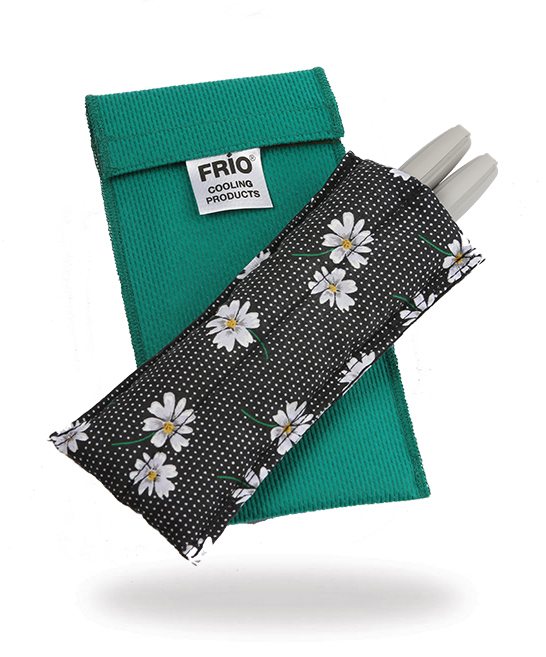
FRIO Duo – Collection
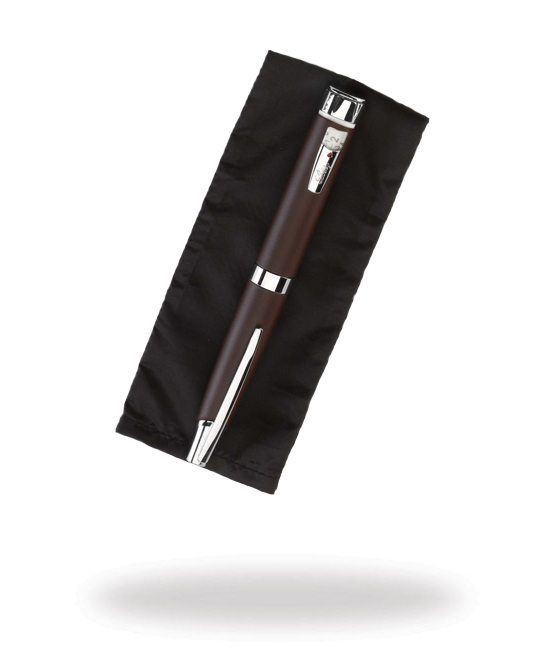
FRÍO ® Waterproof Liner

FRIO Mini Wallet
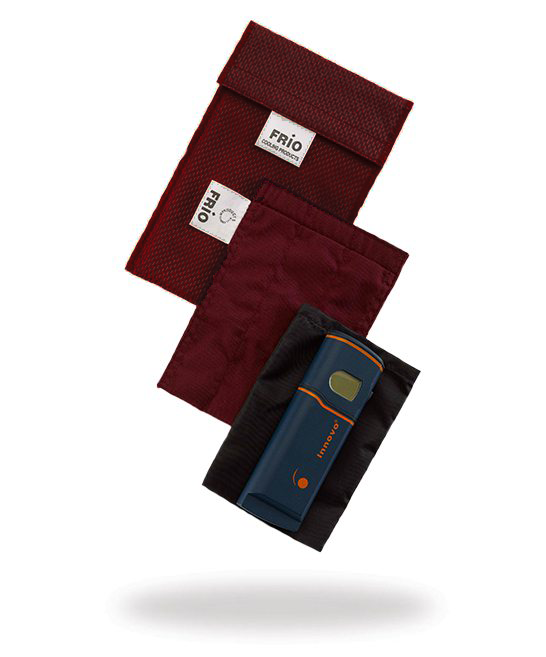
FRIO Pump Wallet

FRIO Extra Large Wallet
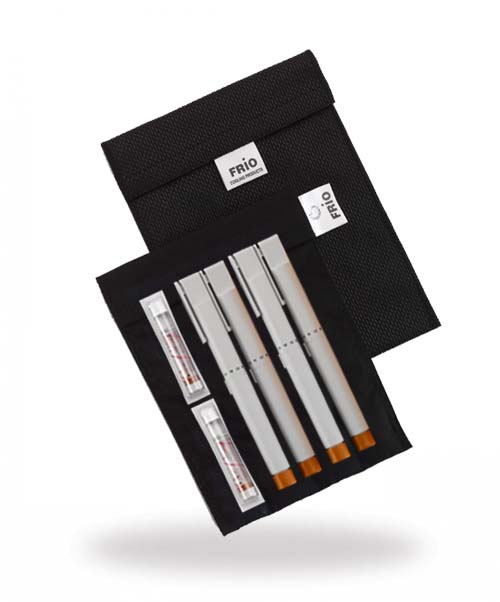
FRIO Large Wallet
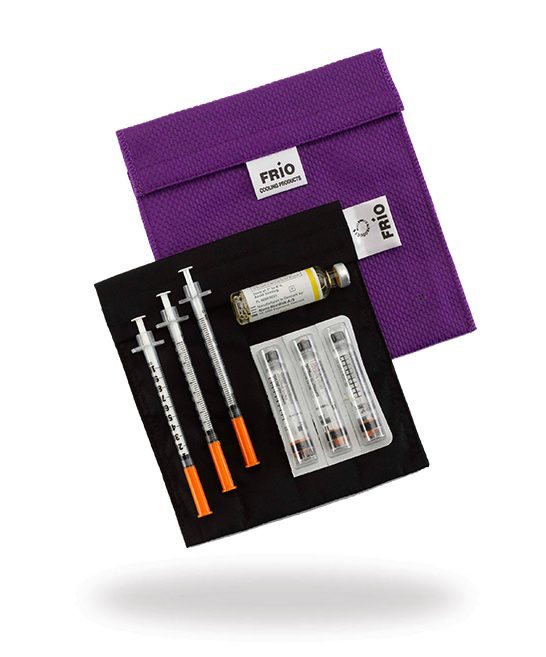
FRIO Small Wallet
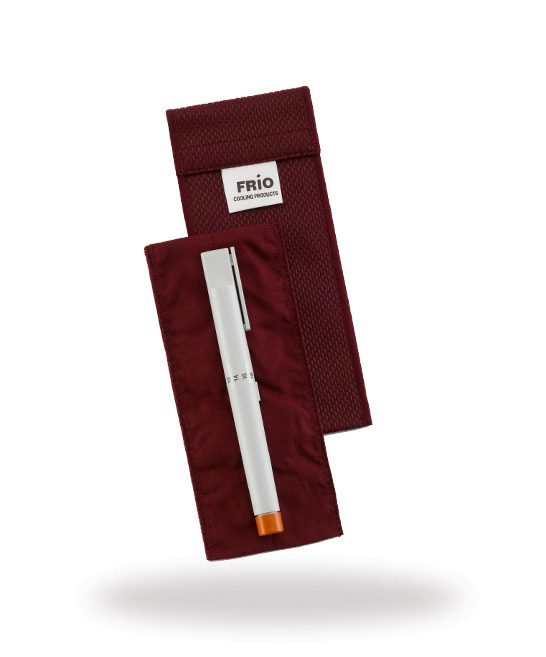
FRIO Individual Wallet
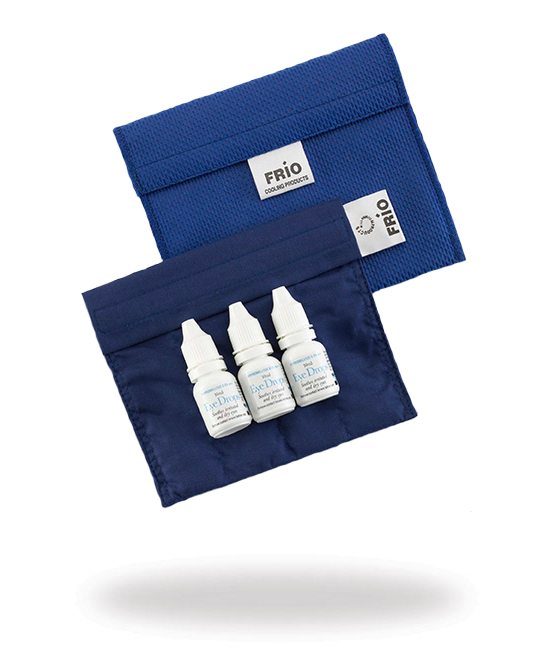
FRIO Extra Small Wallet
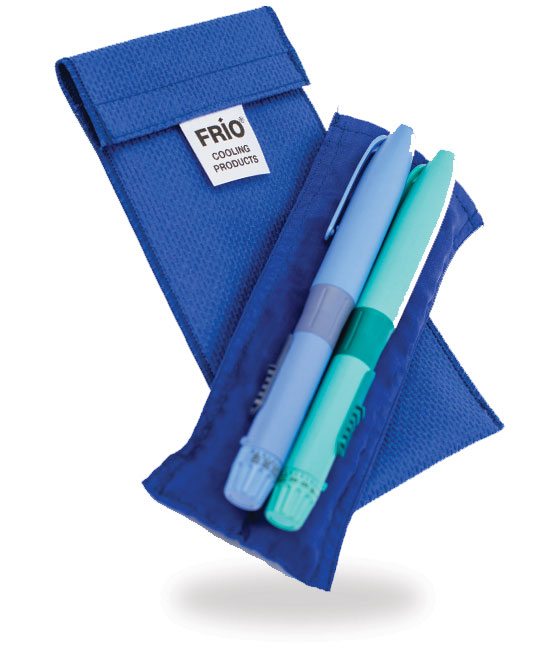
FRIO Duo Wallet
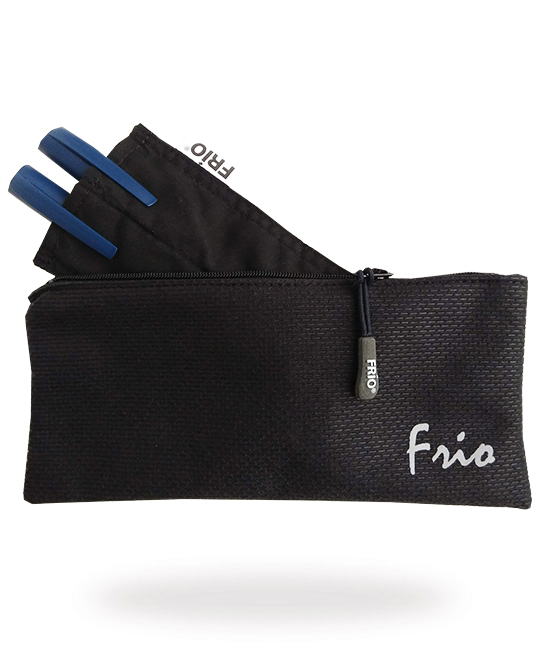
FRIO VIVA Duo Zipper Wallet

FRIO VIVA Large Zipper Wallet

Jungle Five Wallet

Tropical Five Wallet

Blossom Five Wallet

Tan Five Wallet


Jungle Two Wallet

Tropical Two Wallet

Blossom Two Wallet

Tan Two Wallet

Slate Two Wallet

FRÍO ® Keeps Insulin Cool
The frío ® insulin cooler keeps in-use insulin and other temperature sensitive-medications cool and safe, within safe temperatures of 18-26°c (64.4-78.8°f) for a minimum of 45 hours, even in a constant environmental temperature of 37.8°c (100°f)., lasting up to 5 times longer than ice packs, make frío ® part of your every day life – no more bulky, inconvenient packs or vacuum flasks needed ever again, unique patented design, british made since 1996, simple, easy and effective, reseller & bulk orders, we are the master frío ® distributor for the united states. please click here for more information about becoming a reseller and bulk orders., frío ® means freedom, find out how using a frío ® gives you the freedom to get out and about every day., frío ® guides, making a frío ® part of your life is simplicity itself. find out how by using our easy guide..

DIABETES & TRAVELLING
Carry essential supplies and insulin on you at all times
Have several copies of a medical letter stating you have diabetes and are carrying; syringes or pen needles or pumps or a CGM, on you to give to customs agents. Don’t give away the original of this letter
Don’t store insulin in the baggage compartment of planes because it will freeze
Get specialist help before you leave on adjusting insulin doses and food through time zones
If you use an insulin pump, follow the manufacturer’s guidelines for flying
If you use a CGM, follow the manufacturer’s guidelines for flying
Don’t expose your insulin to extremes of temperature. If necessary carry it in an insulated bag or small wide mouthed thermos flask
Always obtain medical insurance when travelling
Check the strength of any insulin you get overseas (some countries market different strength insulin)
Check your blood glucose frequently while travelling
DIABETES AND RELATED DOCUMENTS:
Before any trip, get two papers from your doctor:
A letter for customs
A letter for a doctor (should you need to see one when you are away)
The letter for customs:
Should state that you have diabetes and are carrying syringes or insulin pens or pumps or a CGM, for your diabetes
Store the original of this letter safely with your travel documents. Have enough photocopies of the letter to give to the customs agents at each border you are crossing. Don’t give away your original!
The letter for a doctor should:
Explain you have Type 1 diabetes and what insulin type and doses you are on. Also the times you usually take your insulin
List the pen device or syringes or pump you use. Plus, the blood glucose meter and testing strips or CGM you use
Note any other medical conditions you have
List any allergies you have or any foods or medications to which you are sensitive
SUPPLIES OF DIABETES MEDICATIONS
Make sure you have a full supply of all your diabetes medications before you leave.
The prescription to get filled before you leave should give you:
Ample supplies of insulin and test strips. Enough to get you through to the next time that you will be settled in a country where you are certain you can get supplies (never run low on insulin or test strips while you are travelling)
A supply of individually foil-wrapped blood ketone testing strips
Two glucagon hypokits if you are travelling with a companion
OTHER MEDICINAL SUPPLIES
It is often sensible to get a prescription from your doctor for anti nausea and vomiting medication, anti diarrhoea medication, and some basic anti fungal and antibiotic medication. Doing this means you’ll have the medications you need should you become sick overseas and are unable to get medical help quickly. Discuss your needs with your doctor and remember to get he/she to give you instructions on when and how to use the medication. Get the prescription filled before you leave and carry these medications on you.
DIABETES IDENTIFICATIONS
No matter where you go, wear a medical ID bracelet or necklace that states you have diabetes and take insulin. It is also wise to carry a card in your wallet or amongst your travelling papers that states you have Type 1 diabetes and are on insulin. If you’re leaving the country learn how to say, “I have diabetes” and “sugar or orange juice, please” in the language or languages of the countries you’ll visit.
Visit the MedicAlert Foundation of New Zealand website for more information about obtaining a medical ID bracelet.
MANAGING LOW BLOOD GLUCOSE LEVELS
Always carry a source of simple carbohydrate on you, like orange juice, glucose tablets, or jelly beans. It also pays to carry a small complex carbohydrate snack on you, like a muesli bar. People on holiday often drink more alcohol than usual. Try to drink only moderately, and be aware of the safety guidelines for drinking alcohol when on insulin.
MANAGING SICKNESS AND HIGH BLOOD GLUCOSE LEVELS
If you get sick overseas, you may not have access to the same level of health care that you have in most parts of New Zealand. You may get sick on a camel trip across the Sahara!
It is important for you to be really clear about how you go about managing sickness and high blood glucose levels. You also need to have the tools for avoiding ketoacidosis on you at all times. These tools are:
In-date, individual foil-wrapped blood ketone testing strips and meter
A good supply of unsweetened fluids. The best is a supply of bottled water
A good supply of short-acting insulin that has been stored properly
Anti nausea and vomiting medicine
Anti diarrhoea medicine
If you are away from medical help a supply of a basic broad-spectrum antibiotic tablets
Anti fungal cream
Your own knowledge about managing your diabetes during illness
Basic guidelines written down (for yourself and others) on managing Type 1 diabetes in illness
Pack more medication and blood-testing supplies than you think you will need. Pack all of these in your personal carry bag so that your medication and testing supplies are always with you. This way you are less likely to get separated from your essential supplies if your luggage goes astray. Also the temperature in the baggage compartments of some planes can be very low. This can damage your insulin, testing strips or meter.
Your carry bag should contain:
Your insulin and your delivery device (syringes or pen)
Blood testing supplies (include extra batteries for your glucose meter)
Ketone testing sticks
Any tablets you take
Your other medications such as glucagon, anti-diarrhoea medication, antibiotics, and anti-nausea drugs
A diabetes identity card stating your name and the fact you are on insulin
A supply of simple carbohydrate e.g. glucose tablets, small juice pack, jelly beans
A well-wrapped snack pack of something containing complex carbohydrate e.g. muesli bar, crackers and cheese
A clear, written guide sheet for managing Type 1 diabetes through illness
TRAVELLING WITH INSULIN
Keep these things in mind when you travel with insulin:
Insulin doesn’t need to be refrigerated, but if insulin is stored in very hot or very cold temperatures it may lose its strength
The glove compartment or boot of your car are not good places to store your insulin as they can get very hot. Nor are backpacks or cycle bags exposed to direct sunlight
If you plan to travel by car or bike or be out in the elements, take steps to protect your insulin
There are travel packs available to keep your insulin cool. They are insulated bags. Another option some people use to keep their insulin cool is a small wide-mouthed thermos. This can be bulky however and if you are hiking or travelling light you may prefer an insulated bag
At room temperature the insulin you have opened (and are using) retains its potency for 30 days
INSULIN DOSES WHEN TRAVELLING
Managing your insulin doses while travelling is complex, especially if you are crossing time zones rapidly (by air). Crossing time zones, effectively, makes your day either longer or shorter, so you’ll need to adjust your insulin doses (and food) to compensate for this.
The safest way to plan your insulin management when travelling is to work it through with your specialist diabetes team before you leave. Give yourself plenty of time to plan by making this appointment well in advance of your departure date.
Take your full travel itinerary when you see the team. Make sure you come away with a plan you are happy with and that you understand. This plan should be written down. See more on managing your insulin across time zones in the “Tips for Travel by Air” section below.
TIPS FOR TRAVELLING BY AIR
Some people have found that if they request special diabetes meals on airlines, they get served meals that are very low in carbohydrate. It is often best to order standard meals and to make healthy choices within that. Always have some appropriate snacks with you also in case your flight or in-flight meal is delayed or the meal doesn’t have enough carbohydrate.
The cabin staff need to know that you have diabetes and are on insulin (in case you get unwell during the trip).
Make sure you carry a supply of simple carbohydrate on you, such as glucose tablets, fruit juice or jelly beans. Also carry blood ketone testing strips.
The security scanners used at check-in will not damage your insulin or blood glucose meter.
Insulin is affected by extreme temperatures and should never be stored in the unpressurised baggage area of the aircraft.
Carry your insulin with you at all times. Wait until you see your food coming down the aisle before you take your injection. Otherwise, a delay in the meal could lead to you having a low blood glucose level.
Be aware of time zone changes and schedule your meals and medication accordingly. If you choose to sleep while on board, use a travel alarm clock or ask the flight attendant to wake you at meal or medication time.
Having two watches often helps you keep track of time zone changes. Keep one watch on the time of the country you have just left. This will enable you to remain very clear on when your next dose of insulin would have been due. You can also accurately judge how much time has passed since you had your last insulin if you record your insulin doses against this time.
INSULIN MANAGEMENT AND TIME ZONES
Making dose changes to your insulin as you cross time zones is complex. Work out a plan in conjunction with your specialist diabetes team, in advance, as to how you will manage your insulin doses.
A simple way that some people choose to manage their insulin crossing time zones, is to use short acting insulin only for the flight. Once they get into the time zone of the country they are travelling to, they reintroduce the intermediate-acting insulin.
In this system, you dose with short acting insulin (actrapid or humulin R) every 4 – 6 hours (before snacks or meals which are taken at these times also) until you are established back onto your usual insulins in the new time zone. BUT get advice, before you leave, on the dosages you need if you are using this system.
Other people adjust the dose of their intermediate insulin up or down according to whether the time zone change means that their day will be getting longer or shorter by more than 2 hours. Get advice before you travel on a plan that will suit you.
If you are on an insulin pump make doubly sure that the safety plug (for waterproofing the pump when swimming) is NOT in your pump. If you leave this plug in your pump when flying your pump can deliver wrong doses due to pressure changes in the atmosphere. Otherwise, a pump is an ideal way to deliver your insulin across time zones as you can pump and dose for meals in the normal way with no real change to your dosages.
AVOID RISK OF BLOOD CLOTS IN YOUR LEGS
Keep up a good level of activity during your journey. Walk around in the terminal before boarding. When you are booking your seat try to get an aisle seat. Because you have diabetes you are more likely to develop blood clots in your legs. To prevent this happening, it is essential that you get up and walk around in flight for a few minutes every hour while you are awake. Doing simple stretching exercises when seated also helps. Move your ankles in circles and point and release your toes often. This encourages good blood flow in your legs.
BLOOD GLUCOSE TESTING
Test your blood glucose levels frequently when travelling through time zones. The timing of your eating and insulin administration will be changed. It is also easy to mix up the effects of jet lag with either high or low blood glucose levels, so it pays to know what your glucose levels are doing. Remember when you are tired it is easy to neglect your diabetes. But it is at these times that you need to know more about what is happening.
ONCE YOU'VE ARRIVED
After a long flight, take it easy for a few days. Test your blood glucose often. If you take insulin, plan your activities so you can work in your insulin and meals. If you are more active than usual, your blood glucose could go too low. Take along snacks when hiking or sightseeing. Don’t assume you will be able to find food wherever you are.
TIPS FOR TRAVELLING BY SEA
With the wide array of mouth-watering foods available on cruise holidays, it’s easy for your diabetes management to get out of kilter. Talk to your diabetes educator or dietitian before you leave about how you plan to deal with the food aspect of the trip. It’s often helpful to get a sample menu from the cruise line so you can get an idea of the types of foods that will be served.
Cruise ships offer some great activities to help you stay active. These range from aerobics classes, swimming, gym workouts, dancing, or strolling the deck at sunset.
It’s a good idea to make the cruise staff aware of your diabetes in case any problems arise. Keep a card or ID on you that states you have diabetes and that you are on insulin.
Because you are crossing time zones slowly, the changes in your insulin dosing times will happen gradually and usually without the need for planned changes.
TIPS FOR TRAVELLING BY CAR
Our “Diabetes & Driving” section contains practical information about what you need to look out for when you are driving, as well as some of the legal aspects of driving in NZ with diabetes. Your travel agent can often find out in advance the rules covering driving in the countries you will be visiting. Test your glucose before and during driving and treat any low blood glucose levels promptly.
TIPS FOR TRAVELLING BY FOOT (or other physically active means e.g. cycling or kayaking)
A holiday in the great outdoors can be a wonderful retreat from the pressures of everyday life. But there are a few things to consider before you go. Here are some tips:
Avoid going camping or hiking alone
Tell someone where you will be and when you expect to return, so you can be found if there is an emergency
Carry all your insulin supplies (as outlined above). Make sure you carry an in-date glucagon kit and teach your travel companion when and how to use glucagon
The key to enjoying a trip of this kind is to try to avoid things that may severely alter your blood glucose levels. Be aware of safety and try to avoid sunburn, injuries, blisters, insect bites and contaminated food or water. Make sure your footwear is sturdy and fits you well. Don’t use brand new shoes to hike in, try them out before the trip.
Eat and drink enough to meet your needs
Take extra food, water, medication and supplies of simple carbohydrate (e.g. glucose, sugar).
Hiking, cycling or kayaking nearly always means you are a lot more physically active than usual, so you may need to significantly reduce all your insulin doses. You will also need to increase your carbohydrate food intake. Have a good understanding of how to reduce your insulin to compensate for increased activity. Your specialist diabetes team can help you with this before you go.
GENERAL TRAVEL TIPS
Test your blood glucose frequently. Your whole routine of activity and food is likely to be very different. The type of food you eat may also change.
Keep a daily record of insulin doses and test results (to help you identify any trends, and to help any medical advisors that you may need to see).
If you are having problems with your blood glucose levels, follow the guidelines you worked out with your team before you went away and/or contact a hospital or diabetes doctor in the area for advice.
If you do visit a hospital take along as much supporting documentation as you can (your medications, test results, travel/medical insurance forms etc.).
Some insulins have different names and are supplied in different strengths in other countries. If you have to use insulin from another country, make sure it is either the same strength as you are used to or a diabetes specialist has helped you make the necessary dose adjustments to take a different strength insulin.
Avoid using local needles if not sterile.
It’s smart to watch what you eat and drink when travelling. Avoid tap water overseas (including ice cubes made from tap water). Ask for a list of ingredients for unfamiliar foods. Some foods may upset your stomach and this may make your blood glucose management more difficult.
Wear comfortable shoes and never go barefoot. Check your feet every day. Look for blisters, cuts, redness, swelling, and scratches. Get medical care at the first sign of infection or inflammation on your feet.
Go wherever your heart leads you. But remember that you take your diabetes with you. Your self care is your travelling friend.

Sign up to my weekly newsletter for latest posts & updates!

The 7 Best Insulin Cooling Cases Available In 2024
Looking for the best insulin cooling case to keep your insulin cool when you need it most? Look no further! We look at the best products available today..
We need insulin to live, simple.
So, it’s very important to ensure that we keep our insulin safe in everyday life.
In certain circumstances, we can put our insulin at risk of dying ; particularly when flying with diabetes supplies .
But thankfully there are ways to counteract this by using insulin cooling cases !
Below I’m going to take you through everything you need to know about insulin cooling cases and about keeping your insulin cold.
What are the different options for keeping insulin cold?
Thankfully we live in a world where innovation is high and that results in a lot of different options when it comes to keeping your insulin cold.
Naturally, the best way to keep our insulin cold is via the fridge, but we don’t always have access to a fridge, especially if we are travelling, out shopping, camping, etc .
So when you don’t have access to a fridge, your next best option is an insulin cooling case!
I’m going to take you through the best insulin cooling cases available on the market today, and show you what my favourite product is for keeping insulin cold.
The best insulin cooling cases available today
1. vivi cap - insulin cooler travel case - keeps diabetes medicine pen safe.

What is the VIVI Cap: Thermal Insulin Pen Carrying Case ?
If you use insulin pens, rather than insulin vials for an insulin pump, then this is the PERFECT product for you.
This innovative product allows you to keep your insulin pen safe whilst on your travels, so it won't overheat or freeze.
Some highlights of the product include:
- Works every day for years with no maintenance: This product is an investment into your insulin cooling future. You won't need to replace it, it won't go "moldy", so you can feel confident it will continue to work for you when you need it most.
- Built-in temperature sensor with easy to read temperature indicator: This is a very cool feature that will actually let you see the temperature that your insulin is at. This takes away the guessing game, so you can always be sure your insulin is cool when traveling.
- Small & lightweight: This product is not going to take up valuable space in a backpack, suitcase or even handbag. It's small enough to fit in your purse, so perfect when you're sightseeing in the city, or heading out for dinner.
- No need for water, ice packs, refrigeration or battery charging: a fuss-free product for those with insulin pens!
I am actually in the process of reviewing this product, so I will add even more thoughts soon, but on first impressions, this seems like an excellent product, especially if you're a frequent traveler like myself.
It's perfect for taking your insulin out for the day, say if you're heading to the beach, or even going on a day-hike, day excursion, whatever it may be.
You can pop your insulin in the VIVI Cap and be sure it's going to stay safe!
A great product to add to your diabetes packing list.
Go ahead and buy it here!

Let’s start with the product I actually use.
I’ve been using Frio bags to keep my insulin cool for around 6 years, and I can honestly say, they haven’t failed me yet.
Here is some information about the Frio insulin cooler to help explain what the product is, and what exactly it does.
- Frio bags are a unique product which is an evaporation cooling pouch that works by keeping your insulin cold when it’s not in the fridge. It’s simply activated by soaking it in cold water for a predetermined amount of time (it depends on the size of your Frio bag, but instructions are provided)
- It keeps your insulin between the temperature of 18-26°C (64.4-78.8°F) for 45 hours minimum, even in a constant environmental temperature of 37.8°C (100°F)
- It can be reactivated for subsequent periods of 45 hours minimum for up to 28 days (however I personally have used them much longer than this)
- They’re stylish and come in a range of designs and colours
- They actually work!
Bottom line: This is my top recommendation for travelling through airport security with diabetes .
3. 4ALLFAMILY 72 Hour Insulin Cooler - Best insulin cooler for road trips

This is another insulin cooling case option that's pretty unique!
The guys at 4AllFamily have sent me one to try out and it's an insulin cooling device that is in the form of a stainless steel cup.
The unique thing is that it looks like a coffee cup, so doesn't look "medical" which is something appreciate.
I hate things that look too medical.
The 4AllFamily 72 Insulin Cooler works in two ways:
1. Firstly there is the Biogel bottle , which you can refrigerate for 6-8 hours in advance then put it in your cooling case along with your insulin and cover it up!
2. If you've got access to electricity, ( even the lighter in your car ) you can put the insulin into your vacuum bottle and cover it with the black cooling cap. You then connect it power with the USB (have it on 30 minutes before you put your insulin in).
This combination of two ways to keep your insulin cool while on the go means it will pretty much keep you covered for all situations . Whether you're road tripping in a car or campervan, backpacking Asia, or even just on holiday!
I think that's really cool!
- Can keep your insulin cool up to 72 hours
- It's versatile and offers a variety of cooling methods in one product
- It can be used with in-car 12V when adapted to a USB so a brilliant option for road trips!
- Comes with a 1 year warranty
- They only seem to have it in blue (which is nice, but maybe not for everyone)
Pro tip: Use the code THATDIABETICGIRL to get 10% off your purchase!
4. BreezyPacks - My favourite for keeping insulin cold!

BreezyPacks are an awesome company that creates a really unique insulin cooling case.
They work by using a unique chemical absorbs energy when the temperature is hot outside and actively cooling the content of the case (PCM). When the temperature drops, the PCM regenerates by itself.
This basically means can simply pop your insulin inside and it will continuously be protected without a time limit. This is because the case recharges itself every night which I think is really cool!
Quick note, in order to recharge, they need to be at a cooler temperature (24°C/75°F or less) or, if you are short on time then you can put them in the fridge for 1-2 hours.
The product comes in two different forms, the BreezyBasic and BreezyPlus , which are basically the same thing, but differ in the amount of time they can protect your insulin in the heat.
The Basic can protect your insulin on a hot day for up to 6 hours, and the plus for 9!
You can fit 2 insulin pens in both, and probably around 3-4 vials (but I will confirm this when I use my product)
What's also great is that the "plus" model can withstand even extreme climates, surviving entire days in the heat and temperatures of up to 46°C/115°F for shorter durations which is perfect if you're off on an adventure hike, or a day of city sightseeing.
I'll have a full review of the product soon which I'll link to when it's ready, but what I really like from first impressions, is the fact that there is no issues or complications or annoyance with "setting" it up, basically because it doesn't need any.
There's no need to drop it in cold water, like you have to with a Frio bag, or charge it, or even refrigerate it, and that's really cool.
Another great thing is they deliver worldwide which is useful!
I think this looks like a great placed product for day trips with diabetes, trips to the beach, camping trips, hiking adventures, or city breaks.
They're also creating a larger version coming out this fall, which will be able to hold even more insulin which will be a great solution for longer holiday trips AND backpacking adventures.
Buy your BreezyPack TODAY!
4. Poucho by Medicool - Great for keeping insulin cold during power outages

This is another cooling wallet available from a different company known as Medicare.
This insulin cooling case appears to work in a similar way to Frio bags, however, I’ve not personally used one.
Here are the important facts about Poucho :
- It’s easily activated by placing in cold water
- They can stay cool for up to 4 days
- There are two different colours and 6 different sizes to suit insulin pens and insulin vials
- Great for keeping insulin cold during power outages (which is something you often forget to consider!)
5. Eono by Amazon - great cooler for day trips

Eono is a new product developed by Amazon and it works in a similar way to the other insulin cooling products I’ve mentioned. However, it uses ice-packs rather than a smart in-built cooling system.
There are some advantages too it, including the fact it’s available on prime, and cheaper.
But let’s see how it compares in terms of ability:
- The insulin carrying case has the ability to hold 4 ice cooling packs and a variety of insulin pens and vials
- Before use you will need to put 2 or 4 cold gel and freezer to shape for 6-8 hours
- The frozen ice pack could ensure the inside temperature at 2-8 degrees around 6-8 hours and keep it at the same condition for about 3-4days under 20 degrees
- I would say this cool bag for insulin would be more suitable for day trips rather than long extended trips
6. Lekesky - Another great option for shorter trips

This product is another insulin cooling case that makes use of ice packs.
This means I would personally recommend Lekesky for shorter travel days and trips, and generally less stressful situations . Here are the facts:
- Keep insulin at 2-8℃ for 6-8 hours. Keep insulin at 25℃ for 48-72 hours
- You need to freeze two cooling tablets in the freezer for 6-10 hours beforehand and the insulated panels help keep them cooler for longer periods
- It comes with a unique and innovative Temperature Indicator which means the temperature of the insulin can be seen directly without using a thermometer
- There is a 1 year warranty with the product for satisfaction
BONUS: Medangel One Sensor - Fantastic tool for all bags

MedAngel is not a specific insulin cooling travel case, rather it’s an innovative piece of technology that allows you to track the temperature of your insulin in different situations.
It can even make sure your insulin cooling case is working properly as you can pop the Medangel One Sensor into the case and monitor the temperature.
The Medangel one sensor can also be placed in your fridge to ensure the temperature is correct and remove the risk of your insulin freezing.
The sensor is synced up to an app on your phone via Bluetooth and it will give you alarms as to when your insulin is too warm and too cold.
It’s a really great product to have when travelling, especially if you’re giving your insulin to a hotel fridge, or basically any fridge you don’t typically use.
It’s also a worthwhile investment because you only need to replace the battery when it runs low.
Or get 20% off when you purchase direct on the website (shipping restrictions apply) with the code:
DREAMBIGTRAVELFAR20
Why do we need to keep insulin cold?

Insulin is a live product that keeps us alive, and in order for it to function well we need to keep it at a certain temperature.
If our insulin is exposed to extreme heat or cold, and fluctuates between these two temperatures, then it can destroy the insulin which will make it no longer suitable for use.
Before you look at ways to keep your insulin cold, you actually need to consider whether it needs to be kept “cold”.
What I mean by this is that if you’re taking your insulin away for a day and you aren’t expecting any crazy temperatures, then your insulin will be completely fine in your diabetic supply bag or purse, whichever you use, rather than an insulin cool pouch.
But, if you’re visiting somewhere very cold, or warm, then it’s best to take extra precautions with an insulin cooling case to help ensure your insulin stays safe.
Insulin can react adversely in cold temperatures. It can easily freeze when exposed to temperatures that it isn’t suitable for.
I once put my insulin in a hotel fridge (or what they told me was a fridge) and it froze my insulin, solid. You cannot use it after it defrosts.
The insulin is dead and needs to be disposed of.
Insulin can also react in warm temperatures. The heat can cause insulin to go cloudy or form clumps, and these are both indications that your insulin has died from exposure to the heat and it should again be disposed of.
What temperature should insulin be unopened?
For unopened insulin, which is still in the box, and hasn’t been used yet, the ideal place for your insulin is in the refrigerator at a temperature of around 2-8 degrees C [ 36-46° F]. If refrigeration is not possible, it can be kept at room temperature [15-25 degrees C] for 28 days.
What temperature should insulin be after opening?

For insulin that’s already been opened and that you are currently using the ideal temperature is 56°F and 80°F (13-26 degrees C).
And the insulin cooling cases we will discuss below will help you ensure your insulin stays at this temperature range.
Other things to do note about insulin temperatures
Insulin is supposed to have a 28 day expiration date, for in-use insulin. However, I honestly do believe this is just a guideline.
Because I travel around the world with the same bottles of insulin for up to 4 months at a time, and my insulin has never, ever expired.
So, I would simply use your insulin and if you find your blood sugars aren’t in range, or you don’t feel like it’s working well, then you will know it has expired.
It’s also recommended that in-use insulin should be kept at room temperature, and NOT in the fridge, but again, I keep my in-use insulin in the fridge and have yet to have any problems.
This is a statement from the insulin company I currently use:
Eli Lilly – Manufacturers of synthetic insulin's – ‘human’ and analogues.
"Our Humulin range has regulatory approval for in-use out of the fridge for 28 days. We have also performed our own in-house studies, however these were also completed after 28 days. Therefore, we do not have any data on in-use of Humulin vials after 28 days and thus, although we have no information to suggest that there is any problem with in-use vials stored in the fridge after 28 days, without data to support this we currently can only recommend in-use for 28 days."
Remember that insulin has an expiry date which is different from the 28 day use date.
Don’t use expired insulin.
Some insulin's last longer than others, you should check with your doctor, or the insulin manufacturer themselves to find out how long your insulin is supposed to last.
Choosing the best insulin cooling case for you
As I mentioned above, the only product I’ve used consistently is the Frio insulin cooling case and I also use the Medangel One Sensor , which has proved useful when I’ve been travelling.
It’s saved my insulin a few times now which is great!
So if I had to choose one product out of them all to choose, then it would naturally be a Frio bag ! But that’s not to say that I won’t try other products in the future, but for now, the Frio bags have never let me down, so I don’t need to change products just yet.
Before I found these products, I used to simply find a picnic bag and put some ice blocks inside them.
I did this when I took a trip around South America, and it was honestly the most awkward and worst thing I could have done.
I had to carry a bulky bag with me, which was unnecessary, and every day I had to keep re-cooling these massive ice blocks.
Thankfully, when I did some proper research, I found these great products instead. And now that there is lots of choice on the market, you’ll definitely be able to find something to suit your insulin cooling needs and if you're looking for a diabetic friendly gift , these insulin cooling cases are always a good choice!
So there you have it!
My guide to the best insulin cooling cases available on the market today to help keep your insulin cool.
If you’ve got any other products to recommend, then definitely pop them below so we can recommend them to others too.
Have you used any of these insulin cooling cases before? How did you find them? Let me know below!
Check out some other useful posts:
- Miao Miao Sensor Review: And a $10 coupon code!
- Dexcom VS Freestyle Libre: A comparison
- Sick day rules and Diabetes: A guide
Living with type 1 diabetes for over 10 years has given me a lot of life experience, challenges and opportunities. I’ve had ups and downs, but I’m proud that I can live out my dreams whilst managing t1d. I hope my stories can help your daily life with diabetes too!
Related Posts

Follow My Journey

Traveling can be a breeze if you follow a few tips
General travel tips
- Be sure to get any required vaccinations at least four weeks before you travel, so you have time to deal with any possible side effects.
- Have a letter from your doctor stating that you need to carry medicines or supplies because some airlines and some countries require you to. Syringes and needles can present a problem when flying and when entering some countries.
- Carry a list of your medications (including the generic names and their dosages) from your pharmacist.
- Keep your medication, meal, and snack times as regular as possible.
- If traveling by air or car, try to do some form of activity during your journey: do simple stretches in your seat, circle your ankles, raise your legs, or move around periodically in the aisles.
- If traveling or hiking into remote areas, bring along a first aid kit and, if you use insulin, a Glucagon Emergency Kit to treat severe hypoglycemia.
- If you will be extremely active while traveling, you may need to decrease your diabetes medication, so be sure to discuss this with your diabetes educator or physician.
Carrying insulin and other supplies
- Always carry your insulin and supplies with you in your carry-on luggage. Do not place insulin in your checked luggage as the temperature fluctuations can damage it.
- When traveling by air, you may carry liquids such as insulin, juice or gels to treat hypoglycemia, etc., even in amounts greater than 100 ml. Just make sure they’re accessible and declare them to security when being screened.
- Syringes and needles are also allowed in your carry-on, as long as you are also carrying with you the injectable medication (e.g. insulin).
Storing insulin while travelling
- Insulin must be stored properly, as it will spoil if left in temperatures that are too hot or too cold.
- Insulin keeps its strength at room temperature for 30 days. If traveling in hot temperatures, store your insulin in an insulated bag. If traveling in cold temperatures, keep your insulin close to your body to stop it from freezing.
- You can carry a small sharps container to store used needles and syringes while traveling.
- Take spare syringes and insulin and backups of any other medications or medical supplies.
- If hand-washing facilities are not available, carry alcohol swabs, moist towelettes or hand sanitizer to clean your fingers prior to testing.
Adjusting insulin for time zone changes
- It is a good idea to speak with your doctor or diabetes educator prior to making changes to your medication schedule or dosage.
- When travelling east, your travel day will be shorter. If you lose more than two hours, you may need to take fewer units of intermediate or long-acting insulin.
- When travelling west, your travel day will be longer. If you gain more than two hours, you may need to take extra units of short-acting insulin and more food.
- If you are crossing time zones, you should discuss your meal and insulin schedule with your doctor or diabetes educator.
Adjusting oral diabetes medication for time zone changes
- Ask your doctor or diabetes educator for any recommended changes to medication timing and dosage.
Airport Screening
- You are not required to disclose that you have diabetes to screening personnel.
- You are not required to remove your insulin pump for screening. Just inform the Screening Officer that you are wearing one.
- Do not wear an insulin pump or CGM through the body scanner or place your insulin pump through the x-ray machine as they may affect the devices’ functioning. Instead, you can ask the screening officer to perform a physical search instead (in a private location, if you wish).
- Handheld metal detectors do not affect the functioning of insulin pumps or CGMs.
- If you have any comments or concerns about a recent experience at airport security, please contact the Canadian Air Transport Security Authority (CATSA) at 1-888-294-2202 (toll-free), TTY 613-949-5534, Fax 613-990-1295 or use CATSA’s feedback form on their website .
The Traveler's Checklist
Before you leave, remember to get:
- Travel health insurance
- A list of your medications
- Your diabetes treatment plan so doctors in the places you travel can understand your needs.
- That you need to carry syringes or needles for insulin pens and lancets as part of your insulin treatment. Having this will be helpful if your luggage is examined at airport security checkpoints.
- The supplies you need for your diabetes care. Be sure to keep your syringes, needles, pens, and lancets in the same boxes that they came in with the original prescription label on them.
- Any needed vaccinations
Ask your doctor, diabetes educator or health care team about:
- Illness management
- Low blood sugar management (and Glucagon for insulin users)
- Adjustments for meals, insulin and medications in different time zones
- Avoiding illness caused by contaminated food and water
- Tips for adjusting your medication if required
Packing list
- Telephone numbers of your doctor and diabetes educator
- Extra supply of insulin or pills for diabetes
- Blood glucose meter and logbook
- Fast-acting sugar to treat low blood sugar
- Snacks to cover delayed meals, such as crackers and fruit
- Extra supply of syringes, needles and an extra insulin pen if used
- Urine ketone-testing strips
Contact us for support
For support and more information about your rights.
Information and support services
1-800-BANTING (226-8464)
Related Content
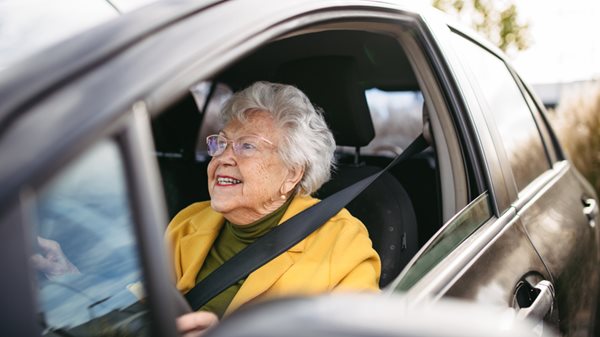
People with diabetes have the right to drive and a license.
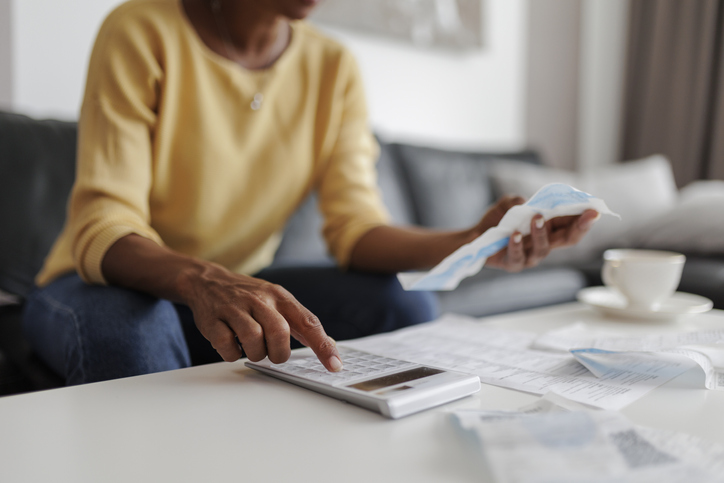
Find out more about obtaining or renewing insurance when you have diabetes.
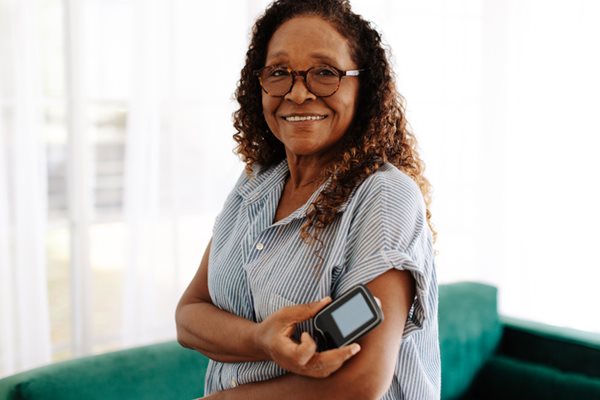
Self-care in public places
It is important to be able to safely treat your diabetes, no matter where you are.

Diabetes Australia
Traveling and diabetes
Whether it’s for work or pleasure, travel can and should be fun. Having diabetes shouldn’t prevent you from experiencing the joy of travel.
Here are the steps you should take to ensure your next interstate or overseas trip is safe, fun and hassle-free.
Three months before departure
1. plan your travel itinerary and make bookings .
- If you wear an electronic device to monitor blood glucose levels (BGLs) or infuse insulin, check with the airline if they can be operated in-flight.
- Arrange your travel insurance for health and belongings.
- Check vaccination requirements.
- When booking your flights, you can choose to tell the airline you have diabetes so your needs are met.
- During booking, you can also order meals that are low in saturated fat and high in fibre and carbohydrate . You may prefer this to ‘diabetic’ meals served in-flight that can be quite bland.
2. Check airline security regulations
Check that you comply with Australian airline security regulations for people with diabetes:
- The person with diabetes whose name is on the airline ticket must carry all their own diabetes supplies, including testing equipment, insulin and Glucagon delivery devices (syringes and pen needles and insulin pump consumables) in their hand luggage. It’s advisable to pack extra insulin in checked-in luggage.
- Your name must appear on all insulin and/or Glucagon script labels.
- You must carry scripts (that are readable) for all medications. Each script must include your name, the name and type of your medication, and your doctor’s contact details.
- Always carry your National Diabetes Services Scheme (NDSS) card. This serves as proof that you need to carry your diabetes equipment, including insulin, if applicable. Bring additional photographic proof of identity, such as a driver’s licence or passport.
- Bring several copies of a letter from your doctor (that are readable) to get you through Customs. It should outline your medical conditions, your medications, and the devices you use for your insulin and blood glucose testing. It should highlight the importance of carrying your medications with you.
- International travellers can carry no more than 100 ml of liquid per container, in their carry-on baggage.
Your supplies of insulin are exempt from this rule. But you need to present the insulin at the security point with proof of your condition and need for your medication.
If not travelling with an Australian airline, check in advance with the airline for specific security guidelines.
3. Arrange travel insurance
You should arrange travel insurance for you and your belongings. Make sure your health cover applies to pre-existing conditions and the places you will visit.
Note: The Australian Government has Reciprocal Health Care Agreements with a range of countries. Travellers can avail themselves of similar benefits to Medicare by showing their Medicare card. This is limited to acute or emergency care.
For more information, visit Medicare Australia or call 02 6124 6333.
Two months before departure
Talk with your doctor.
- Get the required vaccinations.
- Get advice on other tablets you may need to treat diarrhoea or nausea.
- Check your medication/insulin adjustments, Glucagon and testing for ketones during the trip.
- Arrange the papers you will need to comply with airline regulations.
- Tell your doctor if you’re travelling to places with different time zones. Your medications and/or your type of insulin may affect your activity. Your doctor may advise you to follow your normal routine until you stop travelling, have a long sleep and then start from scratch when you wake up. Or your doctor may recommend some medication or insulin changes.
- Before using a support hose that prevents swelling and reduces the risk of clotting in the veins of the legs, check with your diabetes team first.
They may not be suitable for those with conditions like peripheral neuropathy (caused by damage to the nerves in the peripheral nervous system typically affecting the hands, feet and legs).
One month before departure
- Arrange all paperwork, including a letter from your doctor, medication scripts, written details of next of kin, and NDSS and Medicare cards.
- Prepare diabetes medication and testing devices required for the entire trip. This includes medication, insulin, syringes/pen needles or pump and consumables, lancets, test strips, meter (bring spare if possible), Glucagon and delivery devices.
- Check and arrange other medical requirements, including medical identification.
What to pack
- Bring a small, approved sharps container, available from the Diabetes Shop or your pharmacy. Many hotels and airports offer a sharps disposal service for your used lancets and syringes.
- Estimate the medication and diabetes supplies you will need for the entire trip and pack more in case of loss or damage.
- If possible, pack a spare meter.
- Take a small first aid kit with you in case of aches and pains, minor cuts and burns.
- Pack comfortable, well-fitting shoes.
- Carry some form of quick acting carbohydrate, such as glucose tablets or jelly beans in case of hypoglycaemia (low blood sugar).
- Pack an insulated bag for storing your test strips if you are travelling to a place that may be extremely hot or cold. Don’t forget your meter’s user manual.
- EXTRA PRECAUTION – Pack clearly written details of your next of kin or a family member.
What to do in extreme temperatures
Extreme heat or cold can affect your ability to manage diabetes. Here are some steps to take.
- Insulin and blood glucose test strips should be kept below 30 degrees Celsius. To protect them from extreme temperatures, take a small insulated bag available from the Diabetes Shop . Make sure to keep it in your carry-on luggage.
- Temperature also affects the accuracy of blood glucose results. Consult the user manual for your meter’s operational temperature range.
Travelling by air
- Keep all your medication, and diabetes testing and insulin equipment in your carry-on luggage. You can split them evenly between two bags in case one goes missing.
- Pack a separate small bag with enough supply of insulin, injection devices, testing equipment and hypo treatment for the flight. For long flights, pack enough for the first leg and refill it before the next.
- EXTRA PRECAUTION – Wear medical identification that says you have diabetes.
At the airport
- Arrive early to avoid rushing.
- It’s considered unlikely that insulin would be harmed by security X-rays. But you may ask airport security staff to physically check you and your luggage instead if you’re concerned.
- You’re not required to remove your insulin pump at a security point. If this is requested, security is obliged to provide access to a private consultation room. You can also request this room if security staff want to discuss your condition.
During the flight
There are things you can do to ensure you have an enjoyable journey.
- If you wish, you can tell the flight attendant at the start of the trip that you have diabetes so your needs are looked after.
- Keep your diabetes supplies within easy reach, like the seat pocket in front of you.
- Always wait until your meal is served before you administer insulin. For added safety, you can take your insulin halfway through or immediately after your meal in case of a major unforeseen interruption.
- Avoid alcohol.
- Drink enough water to avoid dehydration.
- Sleep as much as you can, but ask the cabin crew or your travel companion to wake you for meals.
- Wear comfortable shoes and exercise your feet to prevent swelling.
- Walk up and down the aisle to assist circulation and keep your blood glucose levels under control, as well as to avoid deep vein thrombosis.
Decreased activity during the flight and the amount of food you eat can increase BGLs. They can go back to normal once you’ve resumed your routine at your destination.
When something goes wrong
With all your careful planning, it’s unlikely that something will go wrong. But don’t worry if you need medical assistance during travel.
Get advice from your travel insurer. You can recover the costs through health benefits or through your medical insurance once you’re back home.
Your diabetes should not stop you from enjoying a memorable and hassle-free trip. By taking doable steps at each stage of your journey, you can have a good time.
Stay informed
The NDSS has fantastic resources to help you prepare for your next trip:
- Travel factsheet
- Travel and type 1 diabetes
What state or territory do you live in?

IMAGES
COMMENTS
72 hours insulin (3 in 1 cooler) keeps your insulin cool using Biogel cold packs and keeps it refrigerated for up to 30 hours. Nomad cooling case uses a Biogel freeze pack big enough to maintain the inside temperature range of 36-46°F / 2-8°C for 30 hours even if it's 104°F / 40°C outside. The large size cooler can hold up to 7 insulin ...
Insulin. Carry On Bags: Yes (Special Instructions) Checked Bags: Yes. Please let our officers know you have medically necessary liquids and place them in a bin separately for x-ray screening. Learn more about transporting medication on your next flight. For more prohibited items, please go to the 'What Can I Bring?' page. The final decision ...
Keeping insulin cool is not always an easy task. There are various ways of keeping your insulin and diabetes supplies cold and protected while traveling. It all depends on the length of travel and the conditions you are traveling in. Thanks to the invention of an insulin cooler and ice packs, it becomes easier to keep insulin cool during your ...
Many travel packs are available to keep insulin cool. Other tips for traveling with diabetes. Other tips include: Take it easy for a few days after a long flight. Test your blood sugar according to your healthcare provider's advice. If you use insulin, check the bottle of insulin before each shot.
Call 877-977-7709 or email us; we are happy to help. Total Diabetes Supply for All Your Diabetic Supply Needs. At Total Diabetes Supply, we bring you the best of insulin coolers and diabetic/insulin travel cases and organizers. We also carry all other insulin and diabetic supplies, diabetic accessories, insulin pump supplies and self-monitoring ...
Travel with your original insulin box and glucose meter that shows the pharmaceutical label. You may need these items in order to board an airplane with syringes and other insulin delivery devices. ... Accessories required to keep insulin cool, such as freezer packs or frozen gel packs, are permitted through the screening checkpoint. 4. Glucagon .
Be sure to pack healthy snacks, like fruit, raw veggies, and nuts. Airport security: Get an optional TSA notification card [PDF - 23.8KB] to help the screening process go more quickly and smoothly. Good news: people with diabetes are exempt from the 3.4 oz. liquid rule for medicines, fast-acting carbs like juice, and gel packs to keep insulin ...
If your medical condition requires it, you are allowed to travel with a juice box or other liquid over 3.4oz., but be prepared for the liquid to receive additional screening. In the event that your insulin pump or glucose monitor is attached to your body, the device is subject to additional screening, including visual inspection.
The Frio insulin case and cooling pack duo to keep two insulin pens or vials colds for up to 45 hours. The cooling pack is TSA friendly and requires no ice packs or refrigeration required. To cool the pack, submerge in water for 8-10 minutes and when it is ready, the pack will puff up. Dry off, and the Frio is ready for travel. Submerge cooling ...
How to keep insulin cool while you travel. Do not check in your insulin. The insulin will freeze in the luggage hold and alter its effectiveness. Step 1 Put your insulin in the inner compartment of your insulated bag (to be hand-carried with you onboard the plane). Step 2. Store the refreezable ice gel pack in the pouch compartment.
The key to getting the most out of your insulin travel cooler is to understand how and when to use each cooling method. 1. BIOGEL FREEZE PACK + USB LID: CHILL YOUR MEDS FOR UP TO 3 DAYS! ... At 86°F / 30°C: the Biogel Freeze pack insulin cooler maintains a fridge temperature of 36-45°F / 2-8°C for 32 hours and stays cool below 79°F / 26°C ...
Supplied in packs containing three sheets of 24 cells. Each cell is approximately 2"x2" (5cm x 5cm). One of these will fit into the smaller of the two pockets in Desang Classic and Slim kitbags along with insulin cartridges. Each pack costs £9.95, plus VAT and P&P. Another generic brand is Polar Gear , which does a range of bags and boxes ...
Advanced cooling method, powered by science. Our BreezyPacks use Phase Change Materials, or PCMs that adapt to the external temperature. The case will remain fully charged below 24°C / 75°F and activate at 27°C / 80°F, offering complete protection for your medications. The case will recharge by itself once temperatures drop to or below 24 / ...
3M Nexcare Reusable Cold Hot Pack with Cover 4x10 inch Box of 2. Your Low Price: $13.23. No reviews. Add to Cart. Travel With Your Insulin With Ease. Whether you need an insulin cooling case that is small and easy to carry or a larger insulin cooler bag, we have a wide selection of insulin coolers to choose from. Each cooler is designed to be ...
The FRÍO ® insulin cooler keeps in-use insulin and other temperature sensitive-medications cool and safe, within safe temperatures of 18-26°C (64.4-78.8°F) for a minimum of 45 hours, even in a constant environmental temperature of 37.8°C (100°F). Lasting up to 5 times longer than ice packs, make FRÍO ® part of your every day life - no more bulky, inconvenient packs or vacuum flasks ...
Insulin Cooler Travel Case with 2 Ice Pack, Insulated Diabetic Medication Organizer Carrying Bag with Extra Pouch for Insulin Pen and Other Diabetic Supplies, Blood Glucose Monitors, Blue. 4. 50+ bought in past month. Save 17%. $999 ($9.99/Count) Typical: $11.99. Lowest price in 30 days. FREE delivery Mon, Aug 7 on $25 of items shipped by Amazon.
A travel case provides a protective covering for insulin, helping to keep the bottle from breaking and shielding it from the sun. Many insulin cases are designed to keep insulin chilled when you're away from home. Cases may do this with removable cold packs that are kept in the freezer until you're ready to travel or with special fabrics that ...
Despite airline security, people with diabetes are able to carry insulin with them in hand luggage. A letter from your doctor is essential. It should clearly explain the necessity of carrying both insulin and syringes /insulin pump onboard. The letter should explain that you need insulin and you should present it at security to staff.
If you plan to travel by car or bike or be out in the elements, take steps to protect your insulin. There are travel packs available to keep your insulin cool. They are insulated bags. Another option some people use to keep their insulin cool is a small wide-mouthed thermos. This can be bulky however and if you are hiking or travelling light ...
This product is another insulin cooling case that makes use of ice packs. This means I would personally recommend Lekesky for shorter travel days and trips, and generally less stressful situations. Here are the facts: Keep insulin at 2-8℃ for 6-8 hours. Keep insulin at 25℃ for 48-72 hours
Carrying insulin and other supplies. Always carry your insulin and supplies with you in your carry-on luggage. Do not place insulin in your checked luggage as the temperature fluctuations can damage it. When traveling by air, you may carry liquids such as insulin, juice or gels to treat hypoglycemia, etc., even in amounts greater than 100 ml.
The frozen ice pack used in conjunction with the insulin insulated travel bag can provide 6-8 hours of low temperature protection for medication. Report an issue with this product or seller. Similar item to consider Amazon Basics Universal Travel Case Organizer for Small Electronics and Accessories, Solid, Black .
Pack a separate small bag with enough supply of insulin, injection devices, testing equipment and hypo treatment for the flight. For long flights, pack enough for the first leg and refill it before the next. EXTRA PRECAUTION - Wear medical identification that says you have diabetes. At the airport . Arrive early to avoid rushing.